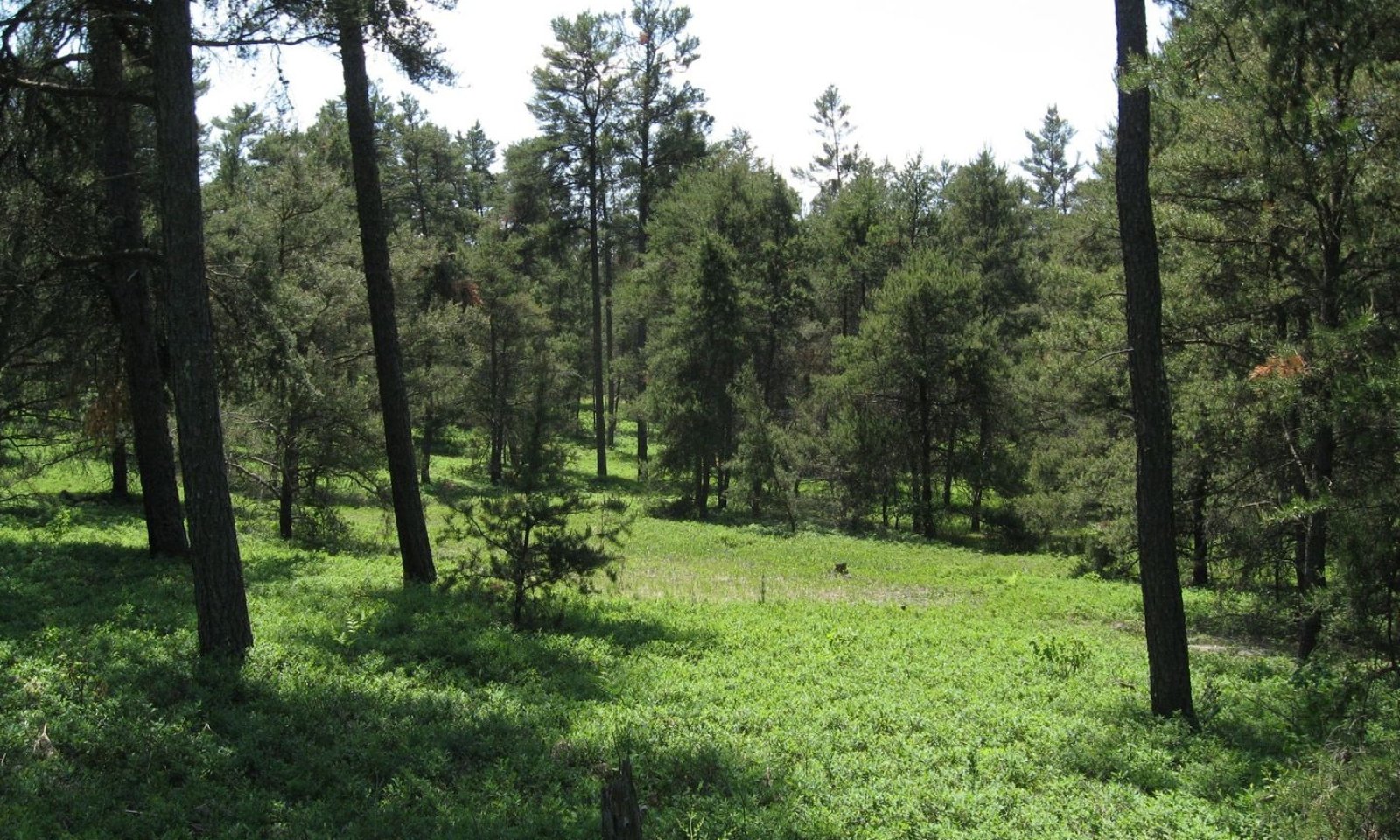

Natural Resources
Conservation Service
Ecological site F094AB019MI
Dry Sandy Plains
Last updated: 2/25/2025
Accessed: 12/20/2025
General information
Provisional. A provisional ecological site description has undergone quality control and quality assurance review. It contains a working state and transition model and enough information to identify the ecological site.
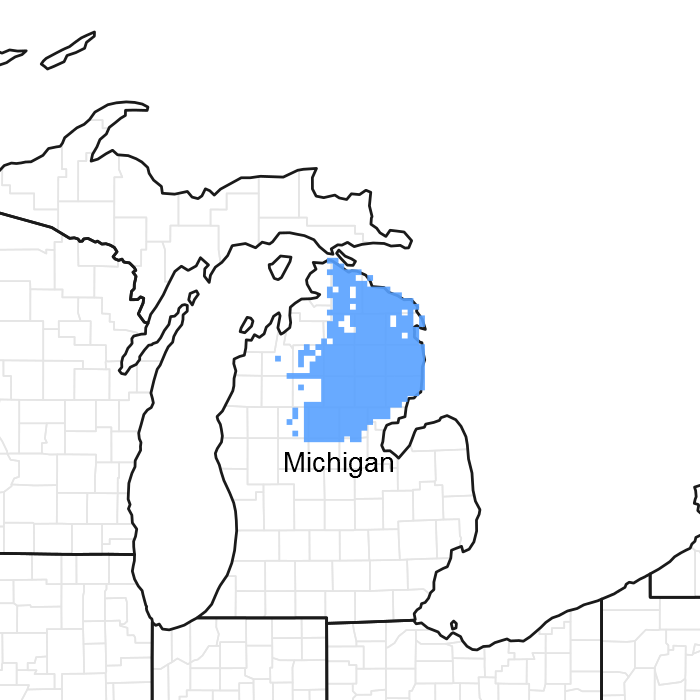
Figure 1. Mapped extent
Areas shown in blue indicate the maximum mapped extent of this ecological site. Other ecological sites likely occur within the highlighted areas. It is also possible for this ecological site to occur outside of highlighted areas if detailed soil survey has not been completed or recently updated.
MLRA notes
Major Land Resource Area (MLRA): 094A–Northern Michigan Sandy Highlands
"This area is dominated by outwash plains and moraines. The terrain can be steep on the moraines and flat in the areas of outwash. Elevation ranges from 177 to 520 m (580 to 1705 ft). Local topographic relief averages 14 m and ranges up to 188 m (45 to 615 ft). This area is covered entirely by drift. Bedrock consisting of Devonian limestone and dolomite with interbedded shale, chert, and anhydrite stringers is at various depths below the surface because of the curvature of the Michigan basin. However, bedrock exposures completely absent, as the depth of glacial drift ranges from 60 to 300 m (200-1000 ft). The Au Sable, Manistee, Au Gres, and Pine Rivers are the major streams draining this MLRA, in both the Lake Michigan and Lake Huron watersheds. The Muskegon River has its headwaters in this area.
About 70 percent of this area is forested, and about 15 percent is cropland or hayland. About one-third of the area is in small, privately owned holdings, and another one-third consists of national and State forests. The forests are used mainly for timber production and recreation. Dairy and beef operations are very important enterprises in the area. Forage and feed grains for dairy cattle and other livestock are the principal crops. Wheat, oats, corn, potatoes, and hay also are grown in the area. The Huron and Manistee National Forests, Hartwick Pines State Park, Camp Grayling (Department of Defense), Pigeon River Country State Forest are among the most notable conservation lands in the area. Reaches of the Au Sable and Pine Rivers are National Wild and Scenic Rivers.
Summary of existing land use:
Upland Forest (58%)
Hardwood (41%)
Conifer (15%)
Swamps and Marshes (14%)
Developed (11%)
Agricultural (10%)
Grassland (5%)
"
Classification relationships
According to the USFS (Bailey) system of ecoregions, the site is located mostly within 212Hg (Kirtland's Warbler High Sand Plains) and 212Hh (Gladwin Silty Lake Plain) subsections. According to the EPA (Omernik) system of ecoregions, the site is located in 50ae (Mio Plateau), 50ah (Tawas Lake Plain) and eastern 50ad (Vanderbilt Moraines) level IV ecoregions. This site roughly corresponds to PVCd, in the Kotar system. This site corresponds to the Outwash Plains ecological land type 10 in the USFS Ecological Land Type system.
Ecological site concept
The central concept of Dry Sandy Plains is uplands lacking a seasonal water table (excessively drained to well drained), lacking significant B horizon development in the soil profile, and on broadly flat landscapes with less than 15% slopes. Site occurs on sandy drift (outwash, ice contact, or lake plains) where soil textures are sand or loamy sand (upper 50 cm >70% sand). Site is outside the heavy snowfall belt, mostly east of Houghton Lake where fire was frequent. Vegetation trending towards xerophytic woodlands and barrens with a high fire frequency.
Associated sites
| F094AB028MI |
Dry Sandy Slopes Dry Sandy Slopes has a greater amount of topographic relief which tends to reduce the size of wildfires. Consequently, there is more white pine, red pine, and oak and less jack pine. |
|---|---|
| F094AB018MI |
Rich Sandy Drift Rich Sandy Drift has a greater amount of spodic development, which indirectly indicates higher productivity, or has higher pH, which drives higher productivity. Consequently, there is more white pine and oak and less jack pine. |
| F094AB020MI |
Acidic Sandy Depression Acidic Sandy Depression has a seasonally high water table, either moderately well drained or somewhat poorly drained. Consequently, there can be a transition to wetland species or higher cover of wintergreen. |
Similar sites
| F094AA006MI |
Snowy Sandy Drift Snowy Sandy Drift has a greater amount of annual snowfall, which leads to longer fire interval. Consequently, there is more white pine and northern hardwoods and less jack pine. |
|---|---|
| F094AB028MI |
Dry Sandy Slopes Dry Sandy Slopes has a greater amount of topographic relief which tends to reduce the size of wildfires. Consequently, there is more white pine, red pine, and oak and less jack pine. |
Table 1. Dominant plant species
| Tree |
(1) Pinus banksiana |
|---|---|
| Shrub |
Not specified |
| Herbaceous |
(1) Carex pensylvanica |
Physiographic features
Site occurs mostly on sandy outwash plains, with minor amounts of coarse textured ice contact, glacial till, and lake plain deposits with similar properties. Landforms are mostly gently sloping.
Table 2. Representative physiographic features
| Landforms |
(1)
Outwash plain
(2) Outwash fan |
|---|---|
| Runoff class | Negligible to low |
| Elevation | 581 – 1,572 ft |
| Slope | 15% |
| Water table depth | 59 – 177 in |
| Aspect | Aspect is not a significant factor |
Climatic features
Mean annual temperatures are 5.7 to 7.6 °C (42 to 46 °F). The warmest six months average 14.3 to 16.1 °C (58 to 61 °F). Mean July temperatures range from 19.1 to 20.8 °C (66 to 69 °F). Mean January temperatures range from -8.2 to -6.0 °C (17 to 21 °F). The maximum monthly average daily highs are 25.9 to 27.7 °C (79 to 82 °F). The minimum monthly average daily lows are -13.2 to -10.7 °C (8 to 13 °F).Temperatures generally decrease with elevation and latitude. Mean annual precipitation ranges from 700 to 870 mm (28 to 34 in). Precipitation decreases from west to east. Average 0 °C (32 °F) frost-free season ranges from 73 to 144 days. Average -2 °C (28 °F) freeze-free season is 106 to 172 days. Mean annual snowfall ranges from 1.1 to 2.9 m (40 to 120 in). Snowfall decreases from northwest to southeast. Mean annual extreme minimum temperatures range from -33.3 to -23.1 °C (-28 to -10 °F), or hardiness zones 4a to 6a.
Table 3. Representative climatic features
| Frost-free period (characteristic range) | 76-110 days |
|---|---|
| Freeze-free period (characteristic range) | 119-143 days |
| Precipitation total (characteristic range) | 29-31 in |
| Frost-free period (actual range) | 52-113 days |
| Freeze-free period (actual range) | 114-150 days |
| Precipitation total (actual range) | 28-33 in |
| Frost-free period (average) | 92 days |
| Freeze-free period (average) | 133 days |
| Precipitation total (average) | 30 in |
Figure 2. Monthly precipitation range
Figure 3. Monthly minimum temperature range
Figure 4. Monthly maximum temperature range
Figure 5. Monthly average minimum and maximum temperature
Figure 6. Annual precipitation pattern
Figure 7. Annual average temperature pattern
Climate stations used
-
(1) EAST TAWAS [USC00202423], Tawas City, MI
-
(2) GRAYLING [USC00203391], Grayling, MI
-
(3) MIO HYDRO PLT [USC00205531], Mio, MI
-
(4) VANDERBILT 11ENE [USC00208417], Vanderbilt, MI
-
(5) HOUGHTON LK ROSCOMMON AP [USW00094814], Houghton Lake, MI
-
(6) HALE LOUD DAM [USC00203529], Glennie, MI
-
(7) WEST BRANCH 3SE [USC00208800], West Branch, MI
Influencing water features
Excessively drained to well drained, with typical water tables greater than 450 cm in depth, (Forest Service Ecological Land Type Phases 9, 10, and 11). Areas transitional to wetter sites have a seasonally high water tables as near as 150 cm to the surface (Forest Service Ecological Land Type Phase 12).
Soil features
Soils are well drained to excessively well drained sands. They are commonly classified Typic Udipsamments and Lamellic Udipsamments, and commonly mapped as Grayling and Graycalm series. The top 50 cm has a typical pH of 5.0 and is 90% sand and 0.8% organic matter. At depths greater than 100 cm, pH ranges as high as 5.8, and texture averages 90% sand and 5% clay. Depth to impeded hydraulic conductivity or root restrictive layers is greater than 200 cm. Depth to carbonates averages deeper than 200 cm. Forest Service Ecological Land Type Phases 9, 10, 11, 12 (Cleland, et al., 1994).
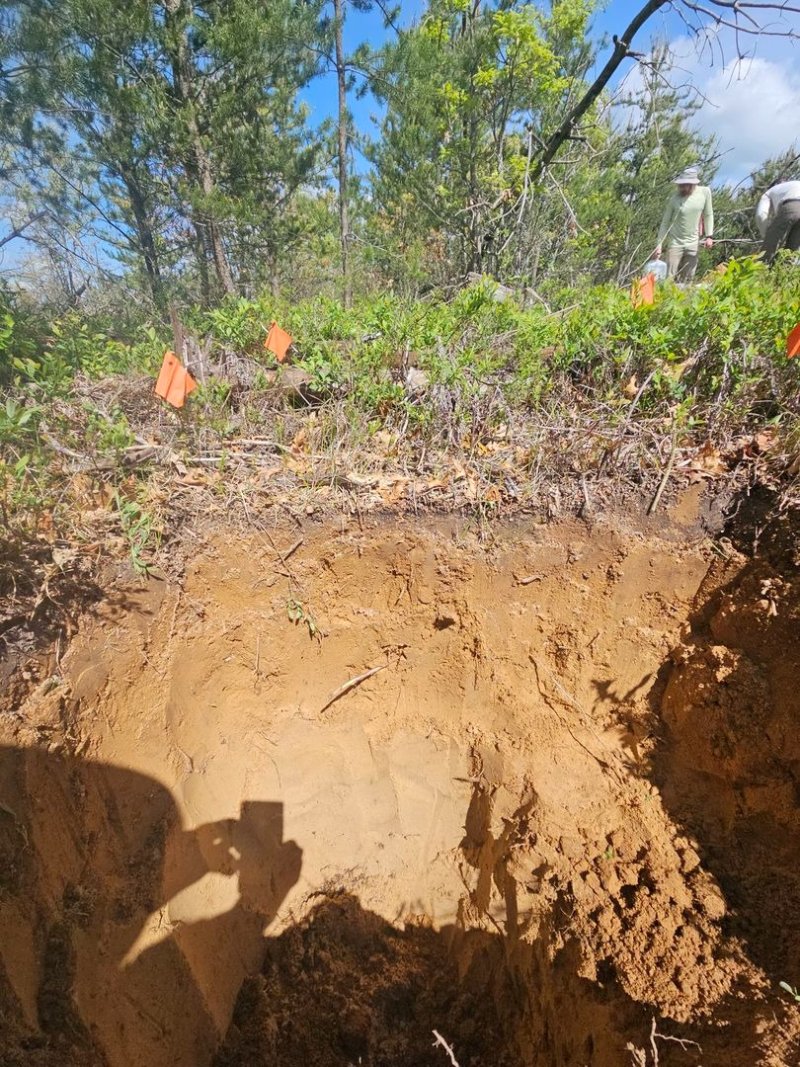
Figure 8. Soil profile of Grayling sand.
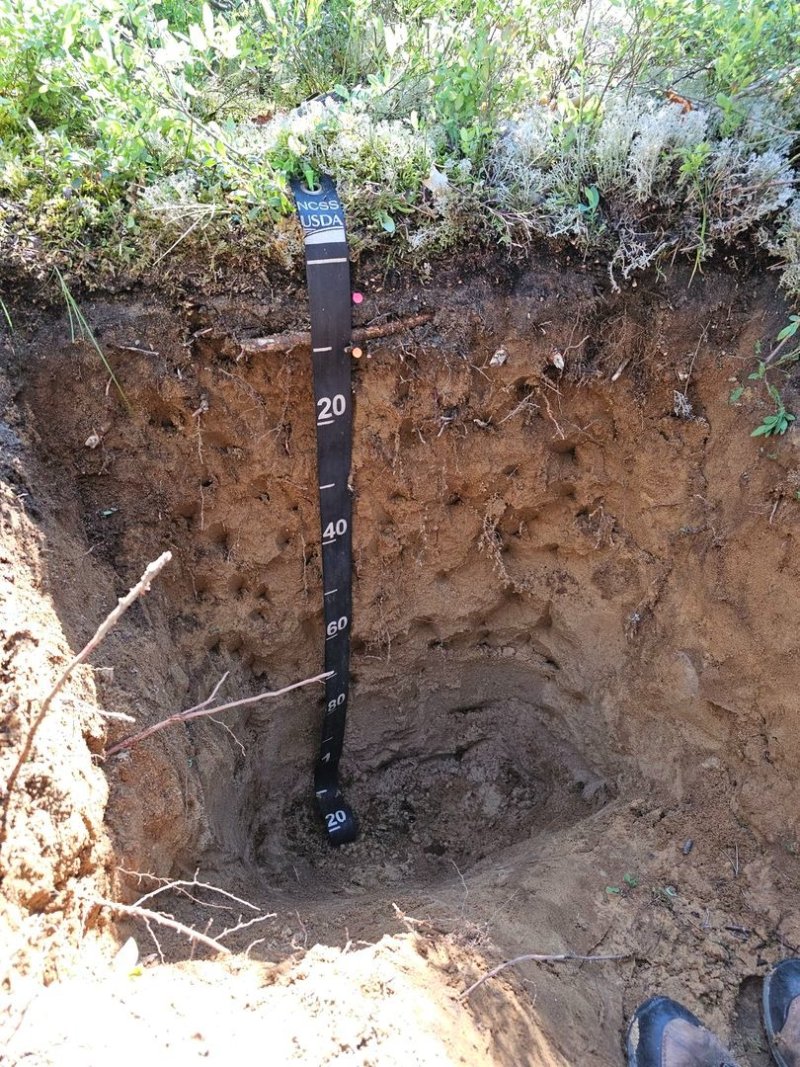
Figure 9. Soil profile of Grayling sand.
Table 4. Representative soil features
| Parent material |
(1)
Outwash
|
|---|---|
| Surface texture |
(1) Sand |
| Drainage class | Excessively drained to well drained |
| Permeability class | Moderately rapid to rapid |
| Soil depth | 79 in |
| Surface fragment cover <=3" | 1% |
| Surface fragment cover >3" | Not specified |
| Available water capacity (0-39.4in) |
1.57 – 3.94 in |
| Soil reaction (1:1 water) (0-19.7in) |
3.5 – 6 |
| Subsurface fragment volume <=3" (0-59.1in) |
10% |
| Subsurface fragment volume >3" (0-59.1in) |
5% |
Ecological dynamics
Dry Sandy Plains shares the same ecological dynamics as Natureserve/Landfire system, Laurentian-Acadian Jack Pine Barrens and Forest (Landfire, 2017). Stand replacing fires occurred every 10-80 years, with light surface fires every 2-20 years. Overstory was dominated by fire dependent, early successional jack pine (Pinus banksiana), red pine (P. resinosa), and Hill's oak (Quercus ellipsoidalis). Areas with overlapping stand replacement fires at intervals less than 20 years may result a "dry sand prairie" phase due to inadequacy of cone production in younger jack pine stands.
The main overstory tree, jack pine reproduction is dependent on reoccurring crown fire to open its serotinous cones, which releases abundant seeds. The Kirtland's Warbler (Setophaga kirtlandii) is dependent upon the early stages of dense jack pine regeneration. This key stage for nesting habitat is 5-23 years (peak at 8-15 years) from establishment while the trees are 1.7-5 m tall with 35-65% cover (Bocetti, Donner, and Mayfield, 2020). Optimal stem density is 5000-7500 per hectare, but naturally regenerated stands with as low as 2000 per hectare and 20-25% cover can support breeding pairs. As trees reach 5 m tall, the lower limbs tend to die off, making for less optimal habitat for the ground nesting Kirtland's Warbler. Kirtland's Warbler can also nest at low densities in young red pine plantations if it includes some amount of young jack pine. Isolated patch sizes generally need to be greater than 80 ha to support Kirtland's Warbler, but in proximity of other suitable stands, they will nest in patches as small as 12 ha (Bocetti, Donner, and Mayfield, 2020).
Understory is usually graminoid dominated with prairie grasses and forbs. Penn sedge (Carex pensylvanica) may form continuous cover under a moderately open canopy. Occasionally, bracken fern (Pteridium aquilinum) may also dominate. Regular fire is necessary to maintain a wider diversity of prairie forbs and grasses such as big bluestem (Andropogon gerardi), little bluestem (Schizachyrium scoparium), and Indiangrass (Sorghastrum nutans). The prairie forbs feature species disjunct from western North America such as prairie dandelion (Agoseris glauca) and rough fescue (Festuca altaica). Kotar community classification (Burger and Kotar, 2003) occuring within this ecosite include: PVCd (Pinus strobus/Vaccinium spp.-Cladina spp.), understory indicator species include: Arctostaphylos uva-ursi, Cladonia rangiferina, Comptonia peregrina, Pinus banksiana, Pteridium aquilinum, and Vaccinium angustifolium (Kinnikinnick, reindeer lichen, Sweetfern, Jack Pine, Bracken Fern, and Northern Lowbush Blueberry) (Burger, and Kotar, 2003).
State and transition model
More interactive model formats are also available.
View Interactive Models
Click on state and transition labels to scroll to the respective text
Ecosystem states
| T1A | - | Clear vegetation; cultivate domesticated species |
|---|---|---|
| T1B | - | Clear vegetation, invasive species introduced. |
| T1C | - | Harvest and Planting |
| R2 | - | Removal of domesticated species; restore native species. |
| T2A | - | Abandoned, succession. |
| R3 | - | Control invasive species; restore native species. |
| T3A | - | Clear vegetation; cultivate domesticated species. |
| R4A | - | Wildfire and migration/recolonization of missing native species. |
State 1 submodel, plant communities
| 1.1A | - | Succession. |
|---|---|---|
| 1.1B | - | Crown fire followed by intense pine seedling regeneration. |
| 1.2A | - | Crown fire followed by intense pine seedling regeneration. |
| 1.3A | - | Succession about 16 years without fire, depending on initial regeneration of jack pine. |
| 1.3B | - | Aspen established. |
| 1.4A | - | Succession. |
| 1.4B | - | Fire, killing regenerating jack pine. |
| 1.5A | - | Aspen failure to regenerate after a fire. |
State 2 submodel, plant communities
State 3 submodel, plant communities
State 4 submodel, plant communities
| P4.1A | - | Succession |
|---|---|---|
| P4.2A | - | Clear cut; replant. |
| P4.2A | - | Clearcut; plant red pine. |
| P4.3A | - | Clearcut, plant jack pine. |
State 1
Reference State
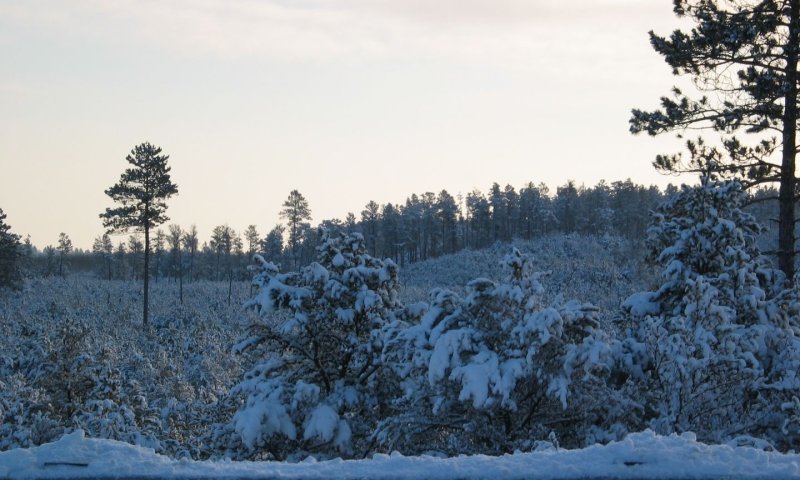
Figure 10. Jack pine-red pine forests of different ages due to differential survival of wildfire.
The reference condition consists of a range of open grassy (sedgy) to open jack pine (Pinus banksiana) and red pine (Pinus resinosa) woodlands.
Characteristics and indicators. All taxa are naturally regenerating and adapted to reoccuring fire. Presence of invasive species or trees planted in rows are all signs of alternative states.
Resilience management. Larger patches are still subject to occasional wildfire despite attempts at fire suppression. Low fertility of the site results in slow plant growth and thereby slow rates of mesophication during longer fire intervals and slow spread of invasive species except where soil is disturbed.
Dominant plant species
-
jack pine (Pinus banksiana), tree
-
northern pin oak (Quercus ellipsoidalis), tree
-
red pine (Pinus resinosa), tree
-
lowbush blueberry (Vaccinium angustifolium), shrub
-
Sesquehana sandcherry (Prunus susquehanae), shrub
-
sweet fern (Comptonia peregrina), shrub
-
Pennsylvania sedge (Carex pensylvanica), grass
-
wavy hairgrass (Deschampsia flexuosa), grass
-
little bluestem (Schizachyrium scoparium), grass
-
prairie Junegrass (Koeleria macrantha), grass
-
mountain ricegrass (Piptatheropsis pungens), grass
-
smooth blue aster (Symphyotrichum laeve), other herbaceous
Community 1.1
Mid-Successional Forest: Pinus banksiana - (Pinus resinosa) - Quercus ellipsoidalis / Carex pensylvanica Forest
This phase has a canopy closure of 25-65% and height of 5-10 m. This phase is 25-50 years old.
Forest overstory. Dominated by jack pine (Pinus banksiana) and scattered red pine (Pinus resinosa) and Hill's oak (Quercus ellipsoidalis).
Forest understory. Dominated by dwarf shrubs like lowbush blueberry.
Dominant plant species
-
jack pine (Pinus banksiana), tree
-
northern pin oak (Quercus ellipsoidalis), tree
-
lowbush blueberry (Vaccinium angustifolium), other herbaceous
Table 5. Canopy structure (% cover)
| Height Above Ground (ft) | Tree | Shrub/Vine | Grass/ Grasslike |
Forb |
|---|---|---|---|---|
| <0.5 | – | 5-16% | 9-39% | 0-6% |
| >0.5 <= 1 | 1-8% | 50-66% | 10-40% | 1-19% |
| >1 <= 2 | 1-8% | 44-65% | 1-6% | 9-28% |
| >2 <= 4.5 | 3-13% | – | 0-2% | 8-20% |
| >4.5 <= 13 | 14-42% | – | – | – |
| >13 <= 40 | 23-40% | – | – | – |
| >40 <= 80 | 14-20% | – | – | – |
| >80 <= 120 | – | – | – | – |
| >120 | – | – | – | – |
Community 1.2
Late-Successional Forest: Pinus banksiana - (Pinus resinosa) - Quercus ellipsoidalis / Carex pensylvanica Forest
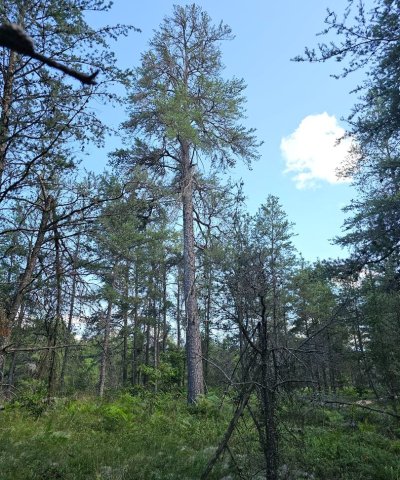

This phase has a canopy closure of 25-65% and height of 10-25 m. The trees are 51-224 years old and are beginning to thin as trees fall apart due to breakage and shading. Senescent trees may become standing snags.
Forest overstory. Dominated by jack pine (Pinus banksiana) and scattered red pine (Pinus resinosa) and Hill's oak (Quercus ellipsoidalis).
Forest understory. Dominated by dwarf shrubs with a thick layer of moss.
Dominant plant species
-
jack pine (Pinus banksiana), tree
-
northern pin oak (Quercus ellipsoidalis), tree
-
red pine (Pinus resinosa), tree
-
Pennsylvania sedge (Carex pensylvanica), grass
Table 6. Soil surface cover
| Tree basal cover | 0% |
|---|---|
| Shrub/vine/liana basal cover | 0% |
| Grass/grasslike basal cover | 0% |
| Forb basal cover | 0% |
| Non-vascular plants | 30-67% |
| Biological crusts | 2-16% |
| Litter | 13-66% |
| Surface fragments >0.25" and <=3" | 0% |
| Surface fragments >3" | 0% |
| Bedrock | 0% |
| Water | 0% |
| Bare ground | 0% |
Table 7. Woody ground cover
| Downed wood, fine-small (<0.40" diameter; 1-hour fuels) | 0-2% |
|---|---|
| Downed wood, fine-medium (0.40-0.99" diameter; 10-hour fuels) | 1-2% |
| Downed wood, fine-large (1.00-2.99" diameter; 100-hour fuels) | 0-1% |
| Downed wood, coarse-small (3.00-8.99" diameter; 1,000-hour fuels) | 1-2% |
| Downed wood, coarse-large (>9.00" diameter; 10,000-hour fuels) | 0% |
| Tree snags** (hard***) | 0% |
| Tree snags** (soft***) | 0% |
| Tree snag count** (hard***) | 0-10 per acre |
| Tree snag count** (hard***) | 0-40 per acre |
* Decomposition Classes: N - no or little integration with the soil surface; I - partial to nearly full integration with the soil surface.
** >10.16cm diameter at 1.3716m above ground and >1.8288m height--if less diameter OR height use applicable down wood type; for pinyon and juniper, use 0.3048m above ground.
*** Hard - tree is dead with most or all of bark intact; Soft - most of bark has sloughed off.
Table 8. Canopy structure (% cover)
| Height Above Ground (ft) | Tree | Shrub/Vine | Grass/ Grasslike |
Forb |
|---|---|---|---|---|
| <0.5 | – | 2-6% | 6-18% | 0-1% |
| >0.5 <= 1 | 2-8% | 29-40% | 6-22% | 0-12% |
| >1 <= 2 | 2-8% | 27-39% | 0-8% | 0-14% |
| >2 <= 4.5 | 4-14% | – | – | 0-1% |
| >4.5 <= 13 | 6-45% | – | – | – |
| >13 <= 40 | 45-68% | – | – | – |
| >40 <= 80 | 28-41% | – | – | – |
| >80 <= 120 | – | – | – | – |
| >120 | – | – | – | – |
Community 1.3
Open Barrens: Pinus banksiana - (Quercus ellipsoidalis) / Schizachyrium scoparium - Prairie Forbs Woodland
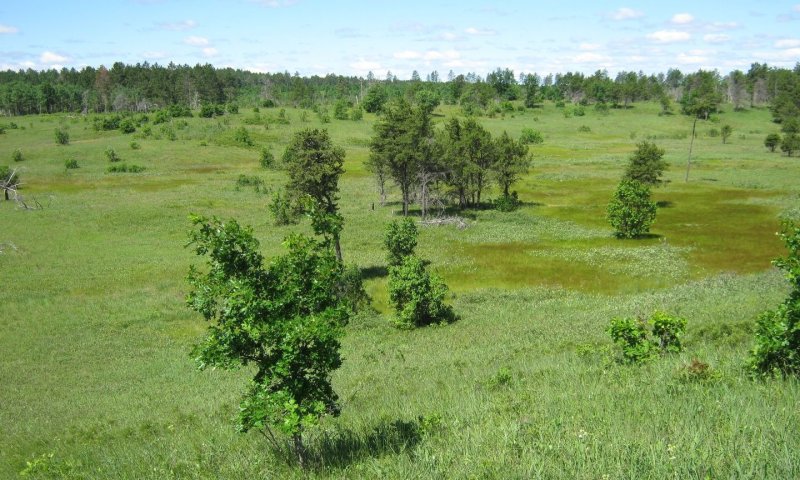
Figure 11. Dry sand prairie, Huron National Forest, June, 2010.
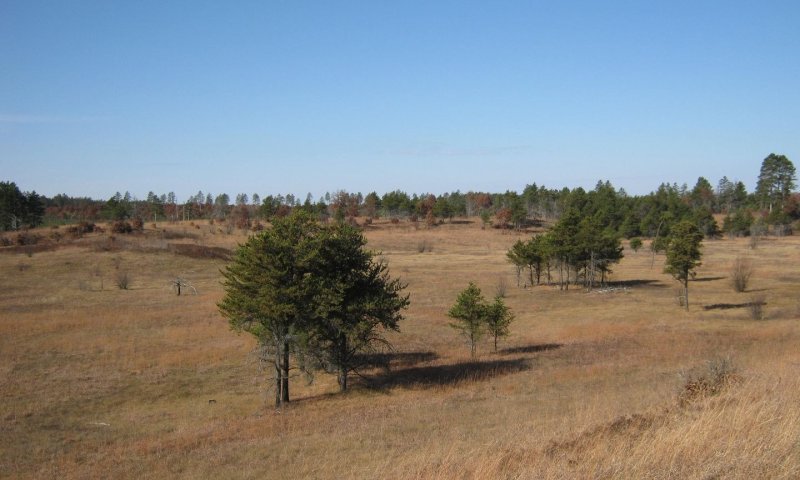
Figure 12. Dry sand prairie, Huron National Forest, October, 2010.

Figure 13. Helianthus occidentalis
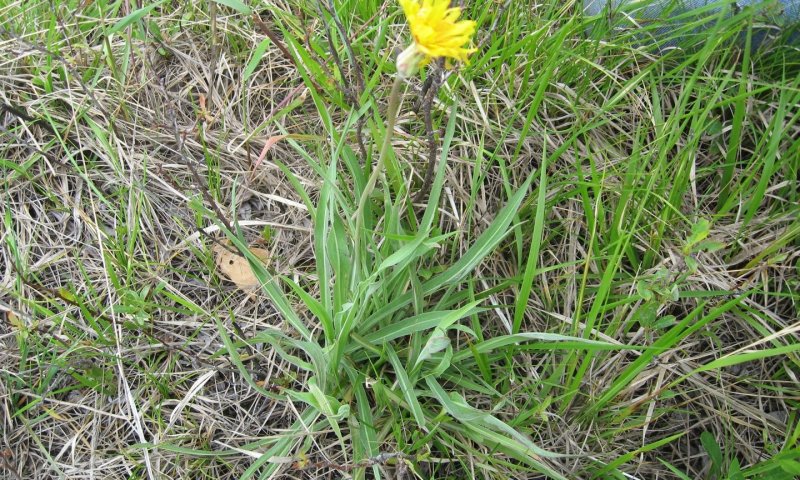
Figure 14. Agoseris glauca
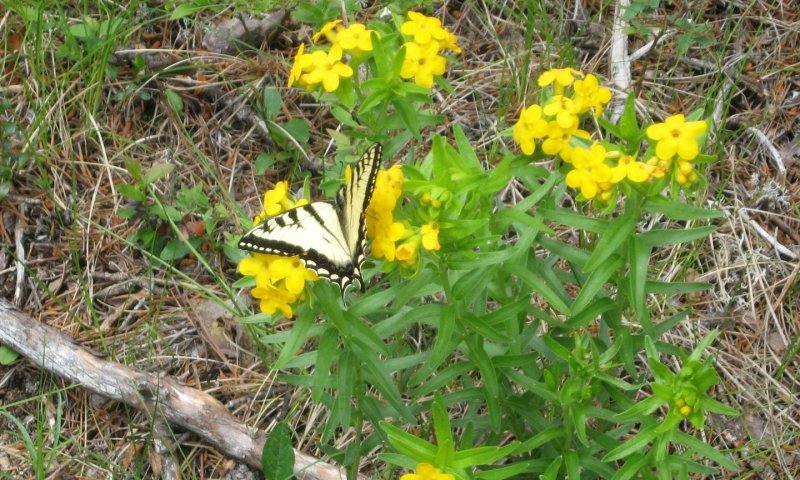
Figure 15. Lithospermum caroliniense
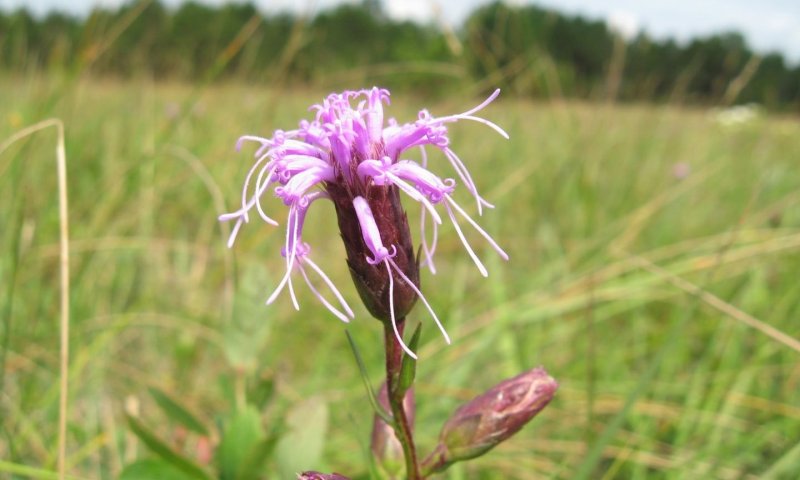
Figure 16. Liatris cylindracea
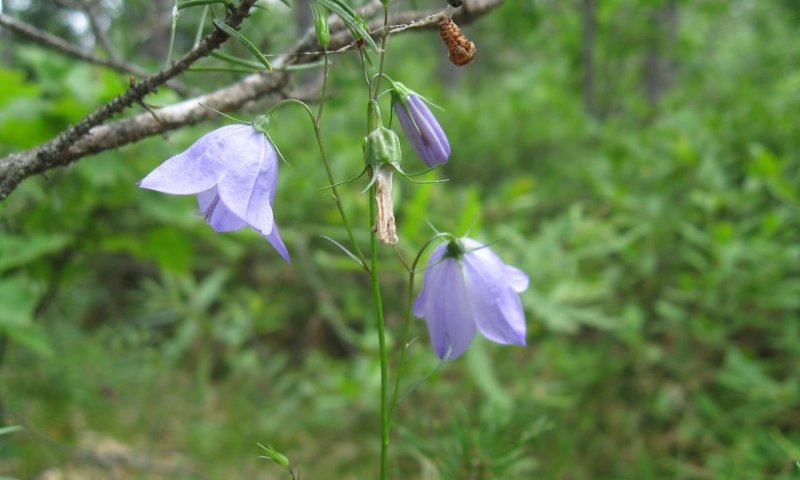
Figure 17. Campanula rotundifolia
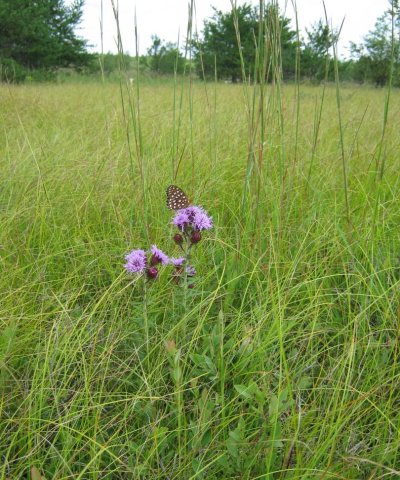
Figure 18. Liatris scariosa
Herb dominated sparse woodland. Woody canopy cover typically 0-25%. Tree heights are 5-25 m, mostly survivors of previous vegetation phases. Tree regeneration generally kept at 0 to 15 years old by reoccurring crown fire. Fire needed to maintain openness or else trees become too large and shade out herb layer.
Forest overstory. Generally open with a few surviving red pine or sparsely regenerated jack pine.
Forest understory. Dominated by graminoids and prairie forbs.
Dominant plant species
-
Sesquehana sandcherry (Prunus susquehanae), shrub
-
kinnikinnick (Arctostaphylos uva-ursi), shrub
-
lowbush blueberry (Vaccinium angustifolium), shrub
-
Pennsylvania sedge (Carex pensylvanica), grass
-
mountain ricegrass (Piptatheropsis pungens), grass
-
big bluestem (Andropogon gerardii), grass
-
little bluestem (Schizachyrium scoparium), grass
Table 9. Canopy structure (% cover)
| Height Above Ground (ft) | Tree | Shrub/Vine | Grass/ Grasslike |
Forb |
|---|---|---|---|---|
| <0.5 | 3-6% | 12-13% | 13-24% | 2-3% |
| >0.5 <= 1 | 3-6% | 19-21% | 45-52% | 5-6% |
| >1 <= 2 | – | 14-15% | 20-27% | 3-4% |
| >2 <= 4.5 | – | – | 5-6% | – |
| >4.5 <= 13 | – | – | – | – |
| >13 <= 40 | – | – | – | – |
| >40 <= 80 | – | – | – | – |
| >80 <= 120 | – | – | – | – |
| >120 | – | – | – | – |
Community 1.4
Early Successional Thicket: Pinus banksiana - (Pinus resinosa) - Quercus ellipsoidalis / Carex pensylvanica Forest
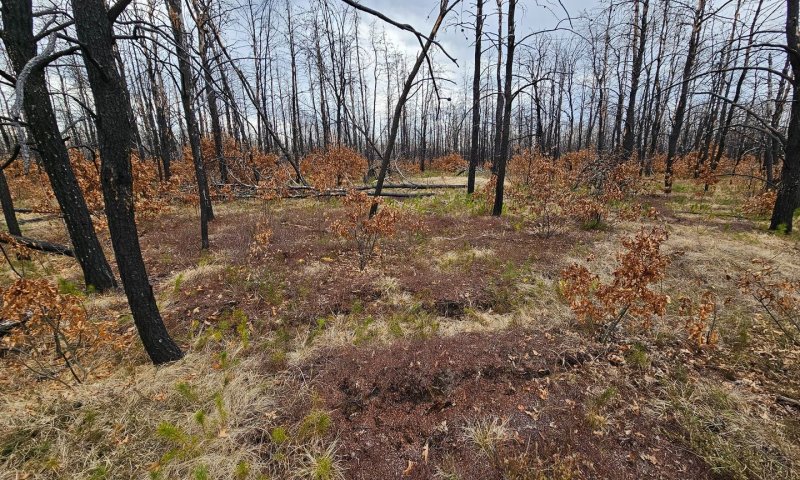
Figure 19. Recently burned jack pine.
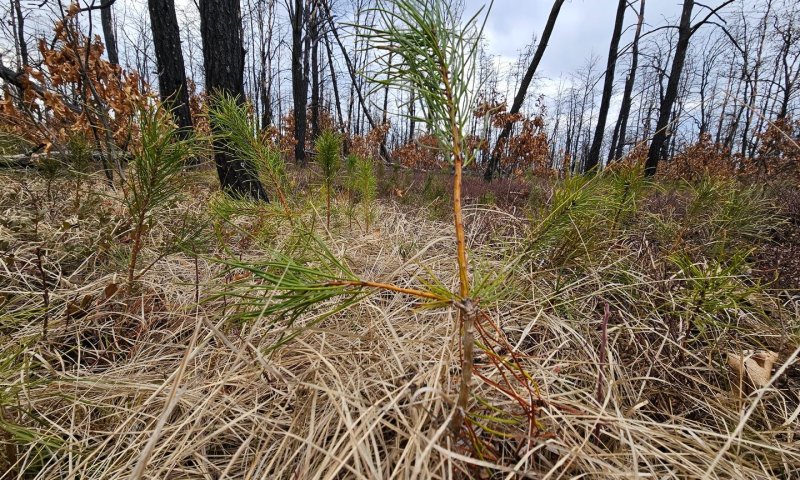
Figure 20. Jack pine seedling.
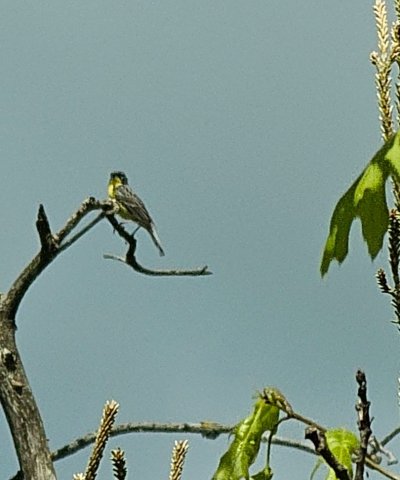
Figure 21. Kirtland's Warbler
Dense thicket of jack pine (Pinus banksiana) at 25-65% crown cover, and 0-5 m tall. Unless fire causes mortality of regenerated jack pine and reverting back to an herb dominated phase, this phase lasts about 0-20 years before succeeding to closed canopy phase. This phase is key nesting habitat for the rare Kirtland's warbler (Setophaga kirtlandi).
Forest overstory. Open with scattered older fire scarred red pine and Hill's oak.
Forest understory. Dominated by dense jack pine and dwarf shrubs, and graminoids.
Dominant plant species
-
jack pine (Pinus banksiana), tree
-
lowbush blueberry (Vaccinium angustifolium), shrub
-
Pennsylvania sedge (Carex pensylvanica), grass
Table 10. Soil surface cover
| Tree basal cover | 0% |
|---|---|
| Shrub/vine/liana basal cover | 0% |
| Grass/grasslike basal cover | 0% |
| Forb basal cover | 0% |
| Non-vascular plants | 1-5% |
| Biological crusts | 0% |
| Litter | 79-91% |
| Surface fragments >0.25" and <=3" | 0% |
| Surface fragments >3" | 0% |
| Bedrock | 0% |
| Water | 0% |
| Bare ground | 0-12% |
Table 11. Woody ground cover
| Downed wood, fine-small (<0.40" diameter; 1-hour fuels) | 0% |
|---|---|
| Downed wood, fine-medium (0.40-0.99" diameter; 10-hour fuels) | 1-5% |
| Downed wood, fine-large (1.00-2.99" diameter; 100-hour fuels) | 0-3% |
| Downed wood, coarse-small (3.00-8.99" diameter; 1,000-hour fuels) | 2-3% |
| Downed wood, coarse-large (>9.00" diameter; 10,000-hour fuels) | 0% |
| Tree snags** (hard***) | 0% |
| Tree snags** (soft***) | 0% |
| Tree snag count** (hard***) | 0 per acre |
| Tree snag count** (hard***) | 0-40 per acre |
* Decomposition Classes: N - no or little integration with the soil surface; I - partial to nearly full integration with the soil surface.
** >10.16cm diameter at 1.3716m above ground and >1.8288m height--if less diameter OR height use applicable down wood type; for pinyon and juniper, use 0.3048m above ground.
*** Hard - tree is dead with most or all of bark intact; Soft - most of bark has sloughed off.
Table 12. Canopy structure (% cover)
| Height Above Ground (ft) | Tree | Shrub/Vine | Grass/ Grasslike |
Forb |
|---|---|---|---|---|
| <0.5 | – | 8-25% | 13-59% | 0-10% |
| >0.5 <= 1 | 1-8% | 71-92% | 14-59% | 2-26% |
| >1 <= 2 | 1-8% | 62-91% | 1-4% | 18-42% |
| >2 <= 4.5 | 1-12% | – | 0-4% | 17-39% |
| >4.5 <= 13 | 21-38% | – | – | – |
| >13 <= 40 | 0-12% | – | – | – |
| >40 <= 80 | – | – | – | – |
| >80 <= 120 | – | – | – | – |
| >120 | – | – | – | – |
Community 1.5
Aspen Clone: Pinus strobus - Populus tremuloides - (Acer rubrum) / Pteridium aquilinum Forest
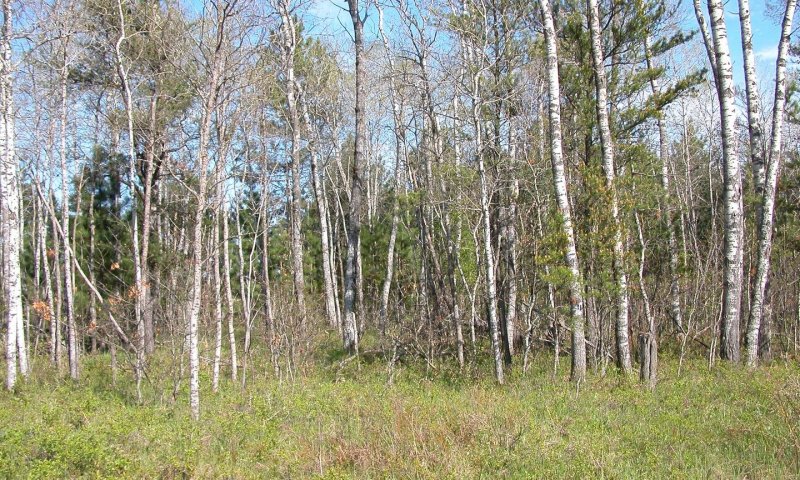
Figure 22. Mixed aspen woodland.
Dominated by clonal aspen with occasional oak or red maple without recent fire.
Forest overstory. Dominated by aspen and occasional oak.
Forest understory. Understory often dominated by bracken fern.
Dominant plant species
-
bigtooth aspen (Populus grandidentata), tree
-
quaking aspen (Populus tremuloides), tree
-
roughleaf ricegrass (Oryzopsis asperifolia), grass
-
western brackenfern (Pteridium aquilinum), other herbaceous
Table 13. Canopy structure (% cover)
| Height Above Ground (ft) | Tree | Shrub/Vine | Grass/ Grasslike |
Forb |
|---|---|---|---|---|
| <0.5 | – | 2-3% | 1-4% | 3-5% |
| >0.5 <= 1 | – | 5-12% | 1-4% | 13-32% |
| >1 <= 2 | 12-12% | 4-9% | – | 10-31% |
| >2 <= 4.5 | 12-12% | 0% | – | – |
| >4.5 <= 13 | 0% | 1-3% | – | – |
| >13 <= 40 | 12-27% | 1-3% | – | – |
| >40 <= 80 | 60-67% | – | – | – |
| >80 <= 120 | 61-74% | – | – | – |
| >120 | 60-70% | – | – | – |
Pathway 1.1A
Community 1.1 to 1.2
Succession.
Pathway 1.1B
Community 1.1 to 1.4
Crown fire followed by intense pine seedling regeneration.
Conservation practices
| Prescribed Burning | |
|---|---|
| Tree/Shrub Site Preparation | |
| Tree/Shrub Establishment | |
| Forest Stand Improvement |
Pathway 1.2A
Community 1.2 to 1.4


Crown fire followed by intense pine seedling regeneration.
Conservation practices
| Prescribed Burning | |
|---|---|
| Tree/Shrub Site Preparation | |
| Tree/Shrub Establishment | |
| Forest Stand Improvement |
Pathway 1.3A
Community 1.3 to 1.4


Succession about 16 years without fire, depending on initial regeneration of jack pine.
Conservation practices
| Tree/Shrub Site Preparation | |
|---|---|
| Tree/Shrub Establishment |
Pathway 1.3B
Community 1.3 to 1.5


Aspen seedlings established or clone migration from adjacent stand due to lack of fire.
Pathway 1.4A
Community 1.4 to 1.1
Succession.
Pathway 1.4B
Community 1.4 to 1.3


Fire, killing regenerating jack pine.
Conservation practices
| Prescribed Burning |
|---|
Pathway 1.5A
Community 1.5 to 1.3


Aspen failure to regenerate after a fire, either due to repeated fire reducing the energy reserves of a clone, or older trees senescing prior to fire.
State 2
Cultivated State
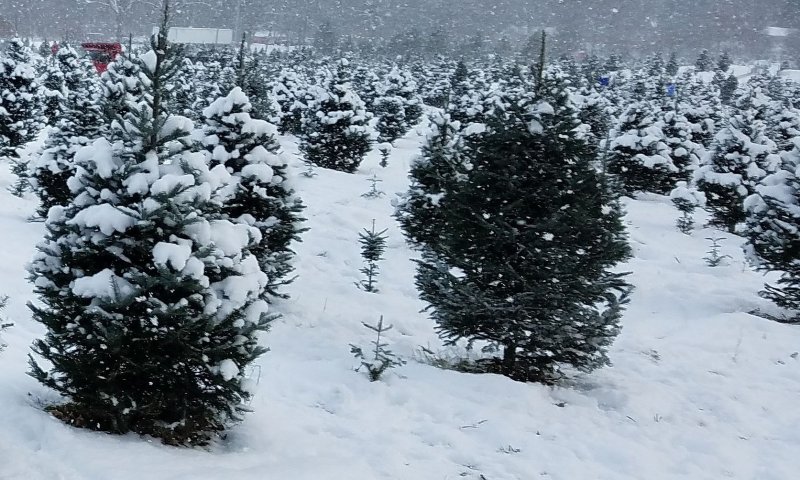
Figure 23. Christmas tree farm.
Hayfields and Christmas tree farms have been observed on similar sites in adjacent LRUs and are likely to occur to some degree here on private land. Cultivation of annual crops is limited due to short growing season and low soil nutrients.
Characteristics and indicators. Composition is completely regulated by land manager. Natural reproduction is inhibited.
Resilience management. May require constant fertilization to maintain productivity, but excess nutrient may also change soil chemistry that affects the species composition if ever abandoned.
Community 2.1
Conservation Agriculture
Community 2.2
Conventional Agriculture
Community 2.3
Conservation Feature
Can be a grassed waterway, conservation reserve, a small patch pollinator garden, or other land taken out of its primary cultural production to mitigate or reduce impacts of adjacent land use, and is not by itself a permanent restoration of a complete native biological community and associated ecosystem services.
Pathway 2.1A
Community 2.1 to 2.2
Revert to unsustainable cultural practices.
Pathway 2.1B
Community 2.1 to 2.3
Establish conservation feature.
Conservation practices
| Conservation Cover | |
|---|---|
| Grassed Waterway |
Pathway 2.2A
Community 2.2 to 2.1
Implement sustainable cultural practices.
Conservation practices
| Conservation Crop Rotation | |
|---|---|
| Cover Crop | |
| Nutrient Management | |
| Integrated Pest Management (IPM) |
Pathway 2.2B
Community 2.2 to 2.3
Establish conservation feature.
Conservation practices
| Conservation Cover | |
|---|---|
| Grassed Waterway |
Pathway 2.3A
Community 2.3 to 2.1
Implement sustainable cultural practices.
Conservation practices
| Conservation Cover | |
|---|---|
| Conservation Crop Rotation | |
| Nutrient Management | |
| Integrated Pest Management (IPM) |
Pathway 2.3B
Community 2.3 to 2.2
Revert to unsustainable cultural practices.
State 3
Seminatural Invaded State
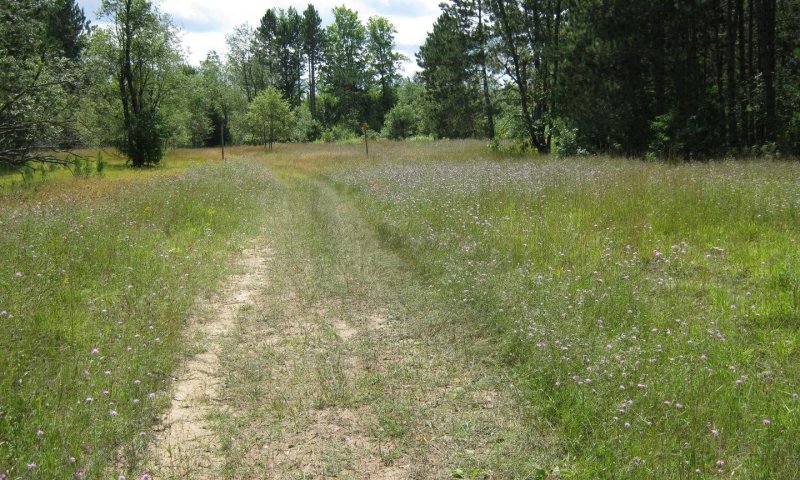
Figure 24. Disturbed land infested with spotted knapweed.
The seminatural state consists of novel or reference analogs which happen to have an excess of invasive species beyond a threshold that native species can reproduce.
Characteristics and indicators. Invasive species in excess of an easily controlled abundance indicates this state.
Resilience management. Some invasive plants release allelopathic chemicals which may inhibit the growth of native species. A long seed bank for some species may make eradication challenging.
Dominant plant species
-
autumn olive (Elaeagnus umbellata), shrub
-
Canada bluegrass (Poa compressa), grass
-
smooth brome (Bromus inermis), grass
-
spotted knapweed (Centaurea stoebe), other herbaceous
Community 3.1
Ruderal Meadow & Shrubland
Community 3.2
Exotic Ruderal Forest
Pathway 3.1A
Community 3.1 to 3.2
Succession.
Pathway 3.2A
Community 3.2 to 3.1
Blowdown/clearcut.
State 4
Intensively Managed State
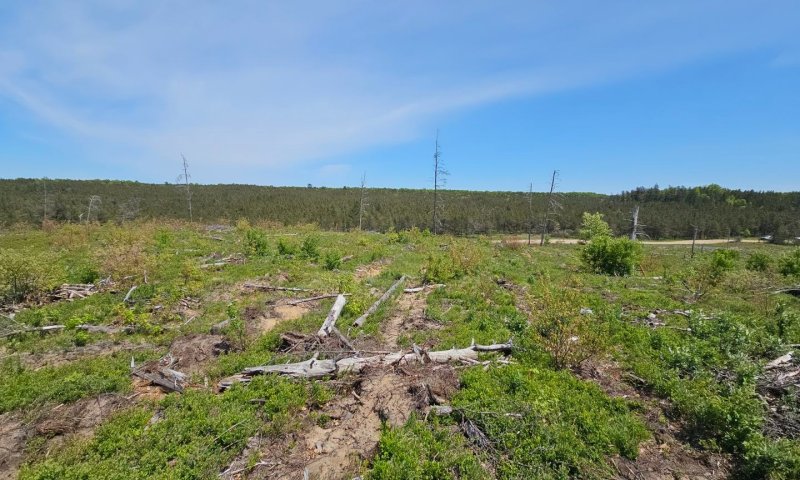
Figure 25. Clear cut jack pine.
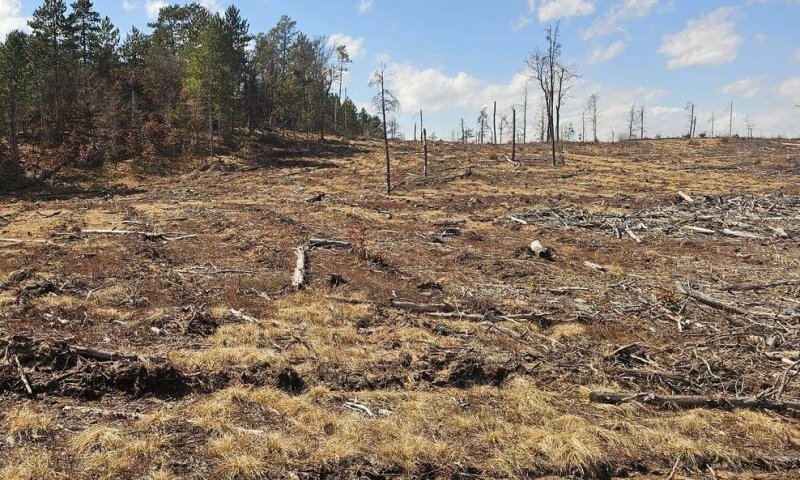
Figure 26. Clear cut jack pine.
The intensively managed state consists of clear cut logging activities and plantations of native tree species. It retains many of the functions of the reference state, but some community phases may be missing species or horizonal and vertical structure may differ in ways that have consequences to wildlife and at minimum "looks" artificial. Sometimes may be lacking in snags, due to harvest removing senescing older trees, but management interventions may mitigate this through girdling or other means.
Characteristics and indicators. Soil disturbance and trees planted in rows is an indicator of this state.
Resilience management. Periodic harvest removing nutrients on the site may reduce the productivity over time, but the species in this ecosystem are already tolerant to low nutrients. It is conceivable that repeated soil disturbance over a large area, without fire, may systematically change species composition over time (i.e. changes in meta-populations of species that have reproductive strategies favored by soil disturbance rather than fire).
Dominant plant species
-
jack pine (Pinus banksiana), tree
-
red pine (Pinus resinosa), tree
-
lowbush blueberry (Vaccinium angustifolium), shrub
-
Pennsylvania sedge (Carex pensylvanica), grass
Community 4.1
Young Jack Pine Plantation
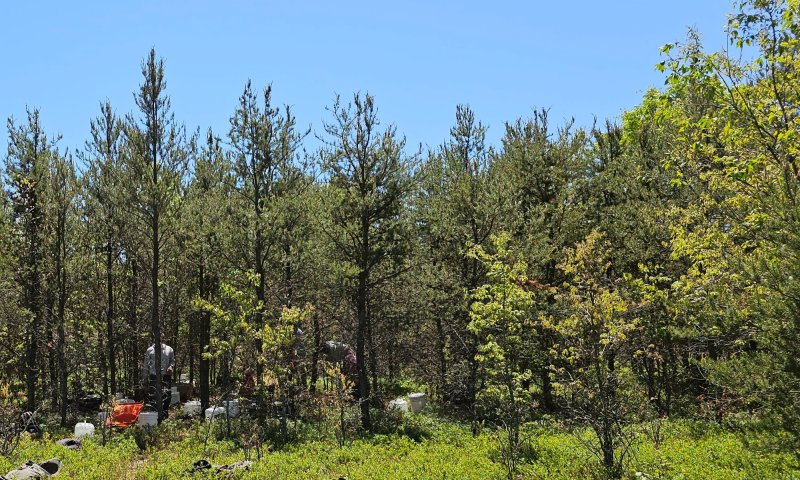
Figure 27. Intensively planted jack pine observed from unplanted diamond-shaped opening.
Densely planted jack pine interrupted with small diamond shaped gaps 200-700 m² in size occupying about 10-25% of the area.
Forest overstory. Jack pine planted in rows close together, except earliest phases prior to reaching overstory.
Forest understory. Earliest phases consists of densely planted jack pine, difficult to move through. Understory may have graminoids and dwarf shrubs. Bare ground created by soil disturbance initially colonized by lichen.
Dominant plant species
-
jack pine (Pinus banksiana), tree
-
lowbush blueberry (Vaccinium angustifolium), shrub
-
Pennsylvania sedge (Carex pensylvanica), grass
Table 14. Soil surface cover
| Tree basal cover | 0% |
|---|---|
| Shrub/vine/liana basal cover | 0% |
| Grass/grasslike basal cover | 0% |
| Forb basal cover | 0% |
| Non-vascular plants | 17-44% |
| Biological crusts | 3-18% |
| Litter | 38-75% |
| Surface fragments >0.25" and <=3" | 0% |
| Surface fragments >3" | 0% |
| Bedrock | 0% |
| Water | 0% |
| Bare ground | 0-4% |
Table 15. Woody ground cover
| Downed wood, fine-small (<0.40" diameter; 1-hour fuels) | 0-1% |
|---|---|
| Downed wood, fine-medium (0.40-0.99" diameter; 10-hour fuels) | 0-4% |
| Downed wood, fine-large (1.00-2.99" diameter; 100-hour fuels) | 0-1% |
| Downed wood, coarse-small (3.00-8.99" diameter; 1,000-hour fuels) | 0-1% |
| Downed wood, coarse-large (>9.00" diameter; 10,000-hour fuels) | 0% |
| Tree snags** (hard***) | 0% |
| Tree snags** (soft***) | 0% |
| Tree snag count** (hard***) | 0 per acre |
| Tree snag count** (hard***) | 0-10 per acre |
* Decomposition Classes: N - no or little integration with the soil surface; I - partial to nearly full integration with the soil surface.
** >10.16cm diameter at 1.3716m above ground and >1.8288m height--if less diameter OR height use applicable down wood type; for pinyon and juniper, use 0.3048m above ground.
*** Hard - tree is dead with most or all of bark intact; Soft - most of bark has sloughed off.
Table 16. Canopy structure (% cover)
| Height Above Ground (ft) | Tree | Shrub/Vine | Grass/ Grasslike |
Forb |
|---|---|---|---|---|
| <0.5 | – | 6-12% | 13-22% | 0-1% |
| >0.5 <= 1 | 2-5% | 30-52% | 13-24% | 1-2% |
| >1 <= 2 | 2-5% | 23-49% | 0-3% | 1-5% |
| >2 <= 4.5 | 0-2% | – | – | 0-3% |
| >4.5 <= 13 | 8-35% | – | – | – |
| >13 <= 40 | 45-60% | – | – | – |
| >40 <= 80 | – | – | – | – |
| >80 <= 120 | – | – | – | – |
| >120 | – | – | – | – |
Community 4.2
Old Jack Pine Plantation
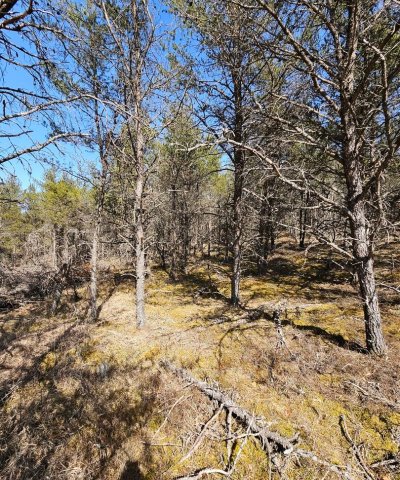
Figure 28. Older jack pine plantation.
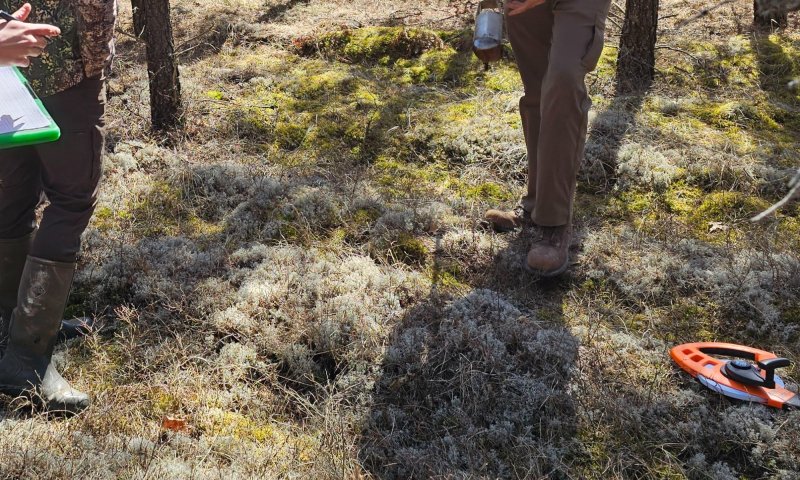
Figure 29. Furrow and mound topography in jack pine plantation.
Old growth jack pine plantation consists of older trees up to 20 m tall arranged in rows with cover up to 70 percent. Mortality among overstory trees may result in snags.
Forest overstory. Dominated by jack pine (Pinus banksiana).
Forest understory. Consists of blueberry and a mossy understory. Lichens may persist in soil disturbed areas.
Dominant plant species
-
jack pine (Pinus banksiana), tree
Community 4.3
Red Pine Plantation
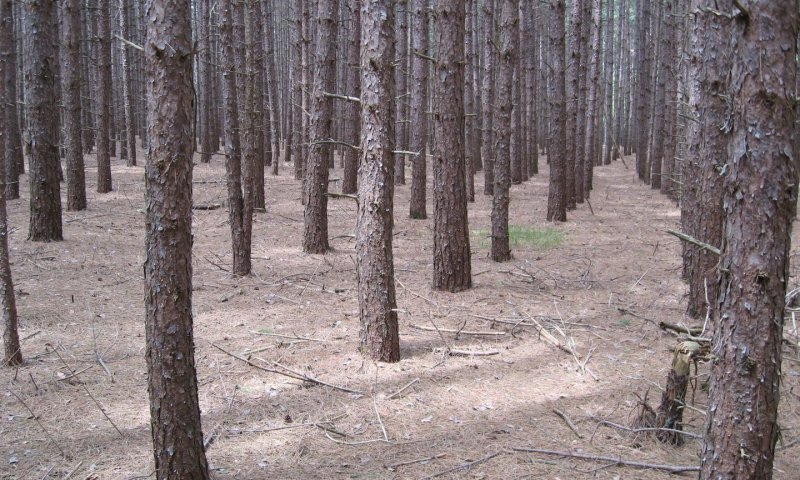
Figure 30. Red pine plantation forest floor view.
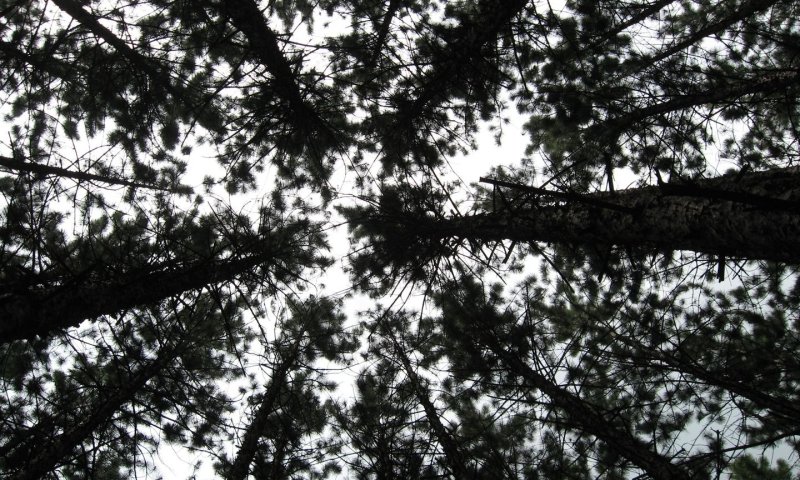
Figure 31. Red pine plantation canopy view.
Red pine planted in rows, with little understory growth.
Forest overstory. Overstory dominated by red pine (Pinus resinosa).
Forest understory. Understory very sparse with heavy pine needle litter. Many of the same understory species as jack pine forests but much sparser cover. Isolated pink lady's slippers may occur.
Dominant plant species
-
red pine (Pinus resinosa), tree
Pathway P4.1A
Community 4.1 to 4.2


Succession, trees grow larger.
Pathway P4.2A
Community 4.2 to 4.1


Clear cut and replant jack pine.
Pathway P4.2A
Community 4.2 to 4.3


Clearcut; plant red pine.
Pathway P4.3A
Community 4.3 to 4.1


Clearcut, plant jack pine.
Transition T1A
State 1 to 2


Clear vegetation; cultivate domesticated species
Transition T1B
State 1 to 3


Clear vegetation, invasive species introduced.
Transition T1C
State 1 to 4


Harvest and planting of a native stand, or replanting of a wildfire consumed stand.
Restoration pathway R2
State 2 to 1


Remove domesticated species; restore native species.
Conservation practices
| Brush Management | |
|---|---|
| Tree/Shrub Site Preparation | |
| Tree/Shrub Establishment | |
| Restoration and Management of Rare and Declining Habitats | |
| Upland Wildlife Habitat Management | |
| Herbaceous Weed Control |
Transition T2A
State 2 to 3


Abandoned, succession.
Restoration pathway R3
State 3 to 1


Control invasive species; restore native species.
Conservation practices
| Brush Management | |
|---|---|
| Tree/Shrub Site Preparation | |
| Tree/Shrub Establishment | |
| Restoration and Management of Rare and Declining Habitats | |
| Upland Wildlife Habitat Management | |
| Herbaceous Weed Control |
Restoration pathway T3A
State 3 to 2


Clear vegetation; cultivate domesticated species.
Restoration pathway R4A
State 4 to 1


Wildfire and migration/recolonization of missing native species.
Additional community tables
Table 17. Community 1.2 forest overstory composition
| Common name | Symbol | Scientific name | Nativity | Height (ft) | Canopy cover (%) | Diameter (in) | Basal area (square ft/acre) |
|---|---|---|---|---|---|---|---|
|
Tree
|
|||||||
| jack pine | PIBA2 | Pinus banksiana | Native | 19.7–39.4 | 2.5–25 | – | – |
| jack pine | PIBA2 | Pinus banksiana | Native | 22–53.5 | 10.9–20.1 | 3.5–9.1 | – |
| northern pin oak | QUEL | Quercus ellipsoidalis | Native | 32.8–52.5 | 0–16 | – | – |
| red pine | PIRE | Pinus resinosa | Native | 19.7–63.6 | 2.7–11.8 | – | – |
| black oak | QUVE | Quercus velutina | Native | 36.1–45.9 | 0–8 | – | – |
| northern pin oak | QUEL | Quercus ellipsoidalis | Native | 19.7–39.4 | 0–3.5 | – | – |
| red pine | PIRE | Pinus resinosa | Native | 19.7–39.4 | 0–2.5 | – | – |
| balsam fir | ABBA | Abies balsamea | Native | 6.6–29.5 | 0–1 | – | – |
| eastern white pine | PIST | Pinus strobus | Native | 21.3–42.7 | 0–0.4 | – | – |
Table 18. Community 1.2 forest understory composition
| Common name | Symbol | Scientific name | Nativity | Height (ft) | Canopy cover (%) | |
|---|---|---|---|---|---|---|
|
Grass/grass-like (Graminoids)
|
||||||
| Pennsylvania sedge | CAPE6 | Carex pensylvanica | Native | 0.3–0.7 | 5–30 | |
| wavy hairgrass | DEFL | Deschampsia flexuosa | Native | 0.7–1.6 | 0–14 | |
| big bluestem | ANGE | Andropogon gerardii | Native | 0.7–1.6 | 0–0.3 | |
| rosette grass | DICHA2 | Dichanthelium | Native | 0.7–1.6 | – | |
| false melic | SCPU | Schizachne purpurascens | Native | 0.3–1 | – | |
|
Forb/Herb
|
||||||
| narrowleaf cowwheat | MELI2 | Melampyrum lineare | Native | 0–0.3 | 0.1–2.4 | |
| spreading dogbane | APAN2 | Apocynum androsaemifolium | Native | 0.3–1.3 | 0–0.1 | |
| Canada mayflower | MACA4 | Maianthemum canadense | Native | 0–0.3 | 0–0.1 | |
| goldenrod | SOLID | Solidago | Native | 0.7–1.6 | – | |
|
Fern/fern ally
|
||||||
| western brackenfern | PTAQ | Pteridium aquilinum | Native | 0.7–1.6 | 0–24.7 | |
| spinulose woodfern | DRCA11 | Dryopteris carthusiana | Native | 0.7–1.6 | 0–0.1 | |
|
Shrub/Subshrub
|
||||||
| lowbush blueberry | VAAN | Vaccinium angustifolium | Native | 0.7–1.6 | 24.8–40.7 | |
| eastern teaberry | GAPR2 | Gaultheria procumbens | Native | 0.3–0.7 | 0–6 | |
| kinnikinnick | ARUV | Arctostaphylos uva-ursi | Native | 0.3–0.7 | 0–2.5 | |
| chokecherry | PRVI | Prunus virginiana | Native | 0.7–1.6 | 0–1 | |
| sweet fern | COPE80 | Comptonia peregrina | Native | 0.7–1.6 | 0.1–0.7 | |
| Sesquehana sandcherry | PRSU3 | Prunus susquehanae | Native | 0.7–1.6 | 0–0.1 | |
| sweet fern | COPE80 | Comptonia peregrina | Native | 1–2 | 0–0.1 | |
| trailing arbutus | EPRE2 | Epigaea repens | Native | 0.3–1 | 0–0.1 | |
| prickly rose | ROAC | Rosa acicularis | Native | 0.7–1.6 | – | |
|
Tree
|
||||||
| northern pin oak | QUEL | Quercus ellipsoidalis | Native | 7.2–14.1 | 0.5–41.7 | |
| white oak | QUAL | Quercus alba | Native | 8.2–16.4 | 0–6.1 | |
| black cherry | PRSE2 | Prunus serotina | Native | 3.3–13.1 | 0–6.1 | |
| northern pin oak | QUEL | Quercus ellipsoidalis | Native | 0.7–1.6 | 0.2–3.5 | |
| white oak | QUAL | Quercus alba | Native | 0.7–1.6 | 0–2.5 | |
| red maple | ACRU | Acer rubrum | Native | 0.7–1.6 | 0–2.1 | |
| black cherry | PRSE2 | Prunus serotina | Native | 0.7–1.6 | 0–2 | |
| northern red oak | QURU | Quercus rubra | Native | 0.7–1.6 | 0–2 | |
| black oak | QUVE | Quercus velutina | Native | 0.7–1.6 | 0–1.5 | |
| jack pine | PIBA2 | Pinus banksiana | Native | 3.9–7.9 | 0–1.1 | |
| black oak | QUVE | Quercus velutina | Native | 3.3–6.6 | 0–1 | |
| northern red oak | QURU | Quercus rubra | Native | 8.2–16.4 | 0–1 | |
| red pine | PIRE | Pinus resinosa | Native | 3.3–6.6 | 0–0.6 | |
| eastern white pine | PIST | Pinus strobus | Native | 8.2–16.4 | 0–0.5 | |
| eastern white pine | PIST | Pinus strobus | Native | 0.7–1.6 | 0–0.3 | |
| common serviceberry | AMAR3 | Amelanchier arborea | Native | 0.7–1.6 | 0.1–0.3 | |
| jack pine | PIBA2 | Pinus banksiana | Native | 0.7–1.6 | 0–0.1 | |
| balsam fir | ABBA | Abies balsamea | Native | 3.3–6.6 | 0–0.1 | |
| common serviceberry | AMAR3 | Amelanchier arborea | Native | 3.3–6.6 | 0–0.1 | |
| red pine | PIRE | Pinus resinosa | Native | 0.7–1.6 | – | |
| balsam fir | ABBA | Abies balsamea | Native | 0.7–1.6 | – | |
|
Biological Crusts
|
||||||
| greygreen reindeer lichen | CLRA60 | Cladina rangiferina | Native | – | 3.6–7.4 | |
| Lichen | 2LICHN | Lichen | Native | – | 0–6.8 | |
| reindeer lichen | CLAR60 | Cladina arbuscula | Native | – | – | |
|
Nonvascular
|
||||||
| Moss | 2MOSS | Moss | Native | – | 9.3–66.2 | |
| Schreber's big red stem moss | PLSC70 | Pleurozium schreberi | Native | – | 17–41.5 | |
| dicranum moss | DIPO70 | Dicranum polysetum | Native | – | 15–25 | |
Table 19. Community 1.3 forest understory composition
| Common name | Symbol | Scientific name | Nativity | Height (ft) | Canopy cover (%) | |
|---|---|---|---|---|---|---|
|
Grass/grass-like (Graminoids)
|
||||||
| Pennsylvania sedge | CAPE6 | Carex pensylvanica | Native | 0.7–1 | 8.8–39.2 | |
| wavy hairgrass | DEFL | Deschampsia flexuosa | Native | 0.7–1.3 | 0–25.1 | |
| mountain ricegrass | PIPU9 | Piptatheropsis pungens | Native | 0.3–1 | 2.5–11.2 | |
| Altai fescue | FEAL | Festuca altaica | Native | 0.3–1 | 0–10 | |
| big bluestem | ANGE | Andropogon gerardii | Native | 1.6–3.3 | 3.1–6.3 | |
| little bluestem | SCSC | Schizachyrium scoparium | Native | 0.7–1.6 | 3.1–4.3 | |
| prairie Junegrass | KOMA | Koeleria macrantha | Native | 0.3–0.7 | 0.1–3.1 | |
| slender wheatgrass | ELTR7 | Elymus trachycaulus | Native | 0.7–1.6 | 0–1.2 | |
| roughleaf ricegrass | ORAS | Oryzopsis asperifolia | Native | 0–0.3 | 0–0.8 | |
| poverty oatgrass | DASP2 | Danthonia spicata | Native | 0.3–0.7 | 0–0.6 | |
| starved panicgrass | DIDE4 | Dichanthelium depauperatum | Native | 0.3–1 | 0–0.2 | |
| dryspike sedge | CASI12 | Carex siccata | Native | 0.7–1 | 0–0.1 | |
|
Forb/Herb
|
||||||
| smooth blue aster | SYLA3 | Symphyotrichum laeve | Native | 0.7–1 | 0.6–2 | |
| Ontario blazing star | LICY | Liatris cylindracea | Native | 0.7–1.3 | 0–1.5 | |
| woodland strawberry | FRVE | Fragaria vesca | Native | – | 0–1 | |
| prairie goldenrod | OLAL2 | Oligoneuron album | Native | 0.7–1.3 | 0–1 | |
| early goldenrod | SOJU | Solidago juncea | Native | 0.7–1.3 | 0.5 | |
| gray goldenrod | SONE | Solidago nemoralis | Native | 0.3–1 | 0–0.5 | |
| yellow pimpernel | TAIN | Taenidia integerrima | Native | 0.3–1 | 0–0.5 | |
| hoary puccoon | LICA12 | Lithospermum canescens | Native | 0.3–1 | 0–0.5 | |
| Canada mayflower | MACA4 | Maianthemum canadense | Native | 0.3–0.7 | 0–0.5 | |
| largepod pinweed | LEIN | Lechea intermedia | Native | 0.3–1 | 0–0.4 | |
| low false bindweed | CASP14 | Calystegia spithamaea | Native | 0–0.3 | 0–0.3 | |
| bluebell bellflower | CARO2 | Campanula rotundifolia | Native | 0.7–1 | 0–0.3 | |
| rattlesnakeweed | HIVE | Hieracium venosum | Native | 0.3–1 | 0–0.3 | |
| tall cinquefoil | POARA4 | Potentilla arguta ssp. arguta | Native | 0.3–1 | 0–0.2 | |
| hookedspur violet | VIAD | Viola adunca | Native | 0–0.3 | 0–0.2 | |
| bastard toadflax | COUM | Comandra umbellata | Native | 0.3–1 | 0–0.2 | |
| narrowleaf hawkweed | HIUM | Hieracium umbellatum | Native | 0.3–1 | 0–0.2 | |
| pale agoseris | AGGL | Agoseris glauca | Native | – | 0–0.1 | |
| wood anemone | ANQU | Anemone quinquefolia | Native | 0.3–1 | 0–0.1 | |
| Howell's pussytoes | ANHO | Antennaria howellii | Native | 0.3–1 | 0–0.1 | |
| Canadian horseweed | COCAC3 | Conyza canadensis var. canadensis | Native | 0.3–1 | 0–0.1 | |
| fewleaf sunflower | HEOC2 | Helianthus occidentalis | Native | 0.7–1.6 | 0–0.1 | |
| longleaf summer bluet | HOLO | Houstonia longifolia | Native | 0.3–1 | 0–0.1 | |
| devil's bite | LISC2 | Liatris scariosa | Native | 0.7–1.3 | 0–0.1 | |
| narrowleaf cowwheat | MELI2 | Melampyrum lineare | Native | 0–0.3 | 0–0.1 | |
| racemed milkwort | POPO | Polygala polygama | Native | 0.3–1 | 0–0.1 | |
| Hill's thistle | CIHI | Cirsium hillii | Native | 0–1.6 | 0–0.1 | |
|
Fern/fern ally
|
||||||
| western brackenfern | PTAQ | Pteridium aquilinum | Native | 0.7–1.6 | 0–1.2 | |
|
Shrub/Subshrub
|
||||||
| Sesquehana sandcherry | PRSU3 | Prunus susquehanae | Native | 0.7–1.6 | 10.6–12.6 | |
| kinnikinnick | ARUV | Arctostaphylos uva-ursi | Native | 0–0.3 | 5–9.4 | |
| lowbush blueberry | VAAN | Vaccinium angustifolium | Native | 0.3–1 | 3–4.7 | |
| sweet fern | COPE80 | Comptonia peregrina | Native | 0.3–1 | 0–4.3 | |
| roundleaf serviceberry | AMSA | Amelanchier sanguinea | Native | 0.7–1.6 | 0.1–2.5 | |
| chokecherry | PRVI | Prunus virginiana | Native | 0.7–1.6 | 0.3–2 | |
| gray dogwood | CORA6 | Cornus racemosa | Native | 0.7–1.6 | 0–0.8 | |
| velvetleaf huckleberry | VAMY | Vaccinium myrtilloides | Native | 0.7–1.6 | 0–0.5 | |
| prickly rose | ROAC | Rosa acicularis | Native | 0.7–1.6 | 0–0.1 | |
| smooth rose | ROBL | Rosa blanda | Native | 0.3–0.7 | 0–0.1 | |
| prairie willow | SAHU2 | Salix humilis | Native | 0.7–1.6 | 0–0.1 | |
| common snowberry | SYAL | Symphoricarpos albus | Native | 0.7–1.6 | 0–0.1 | |
|
Tree
|
||||||
| black cherry | PRSE2 | Prunus serotina | Native | 0.7–1.6 | 0–5 | |
| northern pin oak | QUEL | Quercus ellipsoidalis | Native | 0.7–1.6 | 0–3.1 | |
| jack pine | PIBA2 | Pinus banksiana | Native | 0.7–1.6 | 0–1.2 | |
| quaking aspen | POTR5 | Populus tremuloides | Native | 0.7–1.6 | 0–0.1 | |
| white oak | QUAL | Quercus alba | Native | 0.7–1.6 | 0–0.1 | |
Table 20. Community 1.4 forest overstory composition
| Common name | Symbol | Scientific name | Nativity | Height (ft) | Canopy cover (%) | Diameter (in) | Basal area (square ft/acre) |
|---|---|---|---|---|---|---|---|
|
Tree
|
|||||||
| jack pine | PIBA2 | Pinus banksiana | Native | 13.1–39.4 | 0–2.5 | – | – |
Table 21. Community 1.4 forest understory composition
| Common name | Symbol | Scientific name | Nativity | Height (ft) | Canopy cover (%) | |
|---|---|---|---|---|---|---|
|
Grass/grass-like (Graminoids)
|
||||||
| Pennsylvania sedge | CAPE6 | Carex pensylvanica | Native | 0.3–0.7 | 15.2–63.3 | |
| roughleaf ricegrass | ORAS | Oryzopsis asperifolia | Native | 1.3–2.6 | 0–1.8 | |
| big bluestem | ANGE | Andropogon gerardii | Native | 0.7–1.6 | 0–0.5 | |
| mountain ricegrass | PIPU9 | Piptatheropsis pungens | Native | 0.7–1.6 | 0–0.3 | |
| wavy hairgrass | DEFL | Deschampsia flexuosa | Native | 0.7–1.6 | 0–0.2 | |
| rosette grass | DICHA2 | Dichanthelium | Native | 0.7–1.6 | 0–0.2 | |
| false melic | SCPU | Schizachne purpurascens | Native | 0.3–1 | 0–0.1 | |
|
Forb/Herb
|
||||||
| narrowleaf cowwheat | MELI2 | Melampyrum lineare | Native | 0–0.3 | 0–17.6 | |
| pussytoes | ANTEN | Antennaria | Native | 0.7–1.6 | 0.1–0.2 | |
| spreading dogbane | APAN2 | Apocynum androsaemifolium | Native | 0.7–1.6 | 0.1–0.2 | |
| clasping milkweed | ASAM | Asclepias amplexicaulis | Native | 0.7–1.6 | 0–0.2 | |
| green adder's-mouth orchid | MAUN | Malaxis unifolia | Native | 0.7–1.6 | 0–0.2 | |
| racemed milkwort | POPO | Polygala polygama | Native | 0.7–1.6 | 0–0.2 | |
| hairy goldenrod | SOHI | Solidago hispida | Native | 0.7–1.6 | 0.1–0.2 | |
| smooth blue aster | SYLA3 | Symphyotrichum laeve | Native | 0.7–1.6 | 0.1–0.2 | |
| hookedspur violet | VIAD | Viola adunca | Native | 0.7–1.6 | 0–0.2 | |
| arrowleaf violet | VISA2 | Viola sagittata | Native | 0.7–1.6 | 0–0.2 | |
| Canada mayflower | MACA4 | Maianthemum canadense | Native | 0–0.3 | 0–0.2 | |
|
Fern/fern ally
|
||||||
| western brackenfern | PTAQ | Pteridium aquilinum | Native | 1.3–2.6 | 5.7–59.8 | |
|
Shrub/Subshrub
|
||||||
| lowbush blueberry | VAAN | Vaccinium angustifolium | Native | 0.7–1.6 | 63–73 | |
| sweet fern | COPE80 | Comptonia peregrina | Native | 0.7–1.6 | 0–19.5 | |
| Sesquehana sandcherry | PRSU3 | Prunus susquehanae | Native | 0.7–1.6 | 0–14.7 | |
| kinnikinnick | ARUV | Arctostaphylos uva-ursi | Native | 0.3–0.7 | 0–13.2 | |
| black huckleberry | GABA | Gaylussacia baccata | Native | 0.7–1.6 | 0–8.5 | |
| trailing arbutus | EPRE2 | Epigaea repens | Native | 0.3–1 | 0–3.5 | |
| sweet fern | COPE80 | Comptonia peregrina | Native | 0.7–1.6 | 0–3 | |
| eastern teaberry | GAPR2 | Gaultheria procumbens | Native | 0.3–0.7 | 0.8–2.2 | |
| prairie willow | SAHU2 | Salix humilis | Native | 2.3–4.6 | 0–1 | |
| northern dewberry | RUFL | Rubus flagellaris | Native | 0.7–1.6 | 0–0.5 | |
| roundleaf serviceberry | AMSA | Amelanchier sanguinea | Native | 0.7–1.6 | 0–0.2 | |
| chokecherry | PRVI | Prunus virginiana | Native | 2–3.9 | 0–0.1 | |
|
Tree
|
||||||
| jack pine | PIBA2 | Pinus banksiana | Native | 7.2–14.4 | 2.2–29.6 | |
| northern pin oak | QUEL | Quercus ellipsoidalis | Native | 3.9–7.5 | 0.5–22 | |
| jack pine | PIBA2 | Pinus banksiana | Native | 0.7–1.6 | 0–6.5 | |
| black cherry | PRSE2 | Prunus serotina | Native | 6.9–13.8 | 0–3.1 | |
| northern pin oak | QUEL | Quercus ellipsoidalis | Native | 0.7–1.6 | 0.9–2.3 | |
| black cherry | PRSE2 | Prunus serotina | Native | 0.7–1.6 | 0–0.7 | |
| red maple | ACRU | Acer rubrum | Native | 0.3–0.7 | 0–0.5 | |
| white oak | QUAL | Quercus alba | Native | 0.7–1.6 | 0–0.4 | |
| common serviceberry | AMAR3 | Amelanchier arborea | Native | 0.7–1.6 | 0–0.1 | |
| hawthorn | CRATA | Crataegus | Native | 0.7–1.3 | 0–0.1 | |
|
Biological Crusts
|
||||||
| greygreen reindeer lichen | CLRA60 | Cladina rangiferina | Native | – | 0–0.8 | |
|
Nonvascular
|
||||||
| Moss | 2MOSS | Moss | Native | – | 0.2–0.8 | |
| polytrichum moss | POLYT5 | Polytrichum | Native | – | 0–0.1 | |
Table 22. Community 1.5 forest overstory composition
| Common name | Symbol | Scientific name | Nativity | Height (ft) | Canopy cover (%) | Diameter (in) | Basal area (square ft/acre) |
|---|---|---|---|---|---|---|---|
|
Tree
|
|||||||
| bigtooth aspen | POGR4 | Populus grandidentata | Native | 57.1–83.7 | 56.1–57.9 | 8.3–15.7 | – |
| red maple | ACRU | Acer rubrum | Native | 19.7–39.4 | 16–42 | – | – |
| red maple | ACRU | Acer rubrum | Native | 16.4–91.9 | 10.8–28.3 | 13.4–17.7 | – |
| northern red oak | QURU | Quercus rubra | Native | 26.2–75.5 | 5.5–14.5 | 41.7 | – |
| northern red oak | QURU | Quercus rubra | Native | 16.4–36.1 | 5 | – | – |
Table 23. Community 1.5 forest understory composition
| Common name | Symbol | Scientific name | Nativity | Height (ft) | Canopy cover (%) | |
|---|---|---|---|---|---|---|
|
Grass/grass-like (Graminoids)
|
||||||
| roughleaf ricegrass | ORAS | Oryzopsis asperifolia | Native | 0.3–0.7 | 1.1–2.9 | |
| Pennsylvania sedge | CAPE6 | Carex pensylvanica | Native | 0.3–0.7 | 0.6–1.4 | |
|
Forb/Herb
|
||||||
| starflower | TRBO2 | Trientalis borealis | Native | 0–0.3 | 1 | |
| Canada mayflower | MACA4 | Maianthemum canadense | Native | 0–0.3 | 0.6–0.9 | |
| bigleaf aster | EUMA27 | Eurybia macrophylla | Native | 0.7–1.6 | 0.3–0.7 | |
| pussytoes | ANTEN | Antennaria | Native | 0.7–1.6 | 0.1 | |
| poke milkweed | ASEX | Asclepias exaltata | Native | 0.7–1.6 | 0.1 | |
| bedstraw | GALIU | Galium | Native | 0.7–1.6 | 0.1 | |
|
Fern/fern ally
|
||||||
| western brackenfern | PTAQ | Pteridium aquilinum | Native | 0.7–1.6 | 13.9–30.1 | |
|
Shrub/Subshrub
|
||||||
| black huckleberry | GABA | Gaylussacia baccata | Native | 0.7–1.6 | 1.9–5.1 | |
| lowbush blueberry | VAAN | Vaccinium angustifolium | Native | 0.7–1.6 | 1.1–2.9 | |
| eastern teaberry | GAPR2 | Gaultheria procumbens | Native | 0.3–0.7 | 1.1–2.9 | |
| mapleleaf viburnum | VIAC | Viburnum acerifolium | Native | 0.7–1.6 | 1 | |
| blackberry | RUBUS | Rubus | Native | 0.3–1 | 0.3–0.7 | |
| pipsissewa | CHUM | Chimaphila umbellata | Native | 0.7–1.6 | 0.1–0.4 | |
| mapleleaf viburnum | VIAC | Viburnum acerifolium | Native | 3.3–6.6 | 0–0.1 | |
|
Tree
|
||||||
| red maple | ACRU | Acer rubrum | Native | 8.2–16.4 | 6.2–14.8 | |
| red maple | ACRU | Acer rubrum | Native | 0.7–1.6 | 3.8–8.2 | |
| northern red oak | QURU | Quercus rubra | Native | 8.2–16.4 | 3.5–7.5 | |
| white ash | FRAM2 | Fraxinus americana | Native | 0.7–1.6 | 1.4–3.6 | |
| American witchhazel | HAVI4 | Hamamelis virginiana | Native | 4.9–8.2 | 0.8–2.2 | |
| black cherry | PRSE2 | Prunus serotina | Native | 0.7–1.6 | 0.7–1.5 | |
| American basswood | TIAM | Tilia americana | Native | 0.7–1.6 | 0.6–1.4 | |
| common serviceberry | AMAR3 | Amelanchier arborea | Native | 0.7–1.6 | 0.6–0.9 | |
| northern red oak | QURU | Quercus rubra | Native | 0.7–1.6 | 0.4–0.8 | |
| black cherry | PRSE2 | Prunus serotina | Native | 8.2–16.4 | 0.3–0.7 | |
| American beech | FAGR | Fagus grandifolia | Native | 0.7–1.6 | 0.3–0.7 | |
| common serviceberry | AMAR3 | Amelanchier arborea | Native | 8.2–16.4 | 0.2–0.5 | |
| American basswood | TIAM | Tilia americana | Native | 8.2–16.4 | 0.2–0.5 | |
| white ash | FRAM2 | Fraxinus americana | Native | 8.2–16.4 | 0.2–0.5 | |
| white oak | QUAL | Quercus alba | Native | 0.7–1.6 | 0.1–0.4 | |
| sugar maple | ACSA3 | Acer saccharum | Native | 0.7–1.6 | 0.1 | |
| hophornbeam | OSVI | Ostrya virginiana | Native | 0.7–1.6 | 0.1 | |
| bigtooth aspen | POGR4 | Populus grandidentata | Native | 8.2–16.4 | 0–0.1 | |
| American beech | FAGR | Fagus grandifolia | Native | 8.2–16.4 | 0–0.1 | |
Table 24. Community 4.1 forest overstory composition
| Common name | Symbol | Scientific name | Nativity | Height (ft) | Canopy cover (%) | Diameter (in) | Basal area (square ft/acre) |
|---|---|---|---|---|---|---|---|
|
Tree
|
|||||||
| jack pine | PIBA2 | Pinus banksiana | Native | 12.5–27.6 | 39.9–53.4 | – | – |
| northern pin oak | QUEL | Quercus ellipsoidalis | Native | 6.6–23 | 0–0.1 | – | – |
Table 25. Community 4.1 forest understory composition
| Common name | Symbol | Scientific name | Nativity | Height (ft) | Canopy cover (%) | |
|---|---|---|---|---|---|---|
|
Grass/grass-like (Graminoids)
|
||||||
| Pennsylvania sedge | CAPE6 | Carex pensylvanica | Native | 0.3–0.7 | 14.5–15.4 | |
| big bluestem | ANGE | Andropogon gerardii | Native | 0.7–1.6 | 0–3.5 | |
| poverty oatgrass | DASP2 | Danthonia spicata | Native | 0.3–1 | 0–3.5 | |
| bentgrass | AGROS2 | Agrostis | Native | 0.7–1.6 | 0–0.6 | |
| wavy hairgrass | DEFL | Deschampsia flexuosa | Native | 0.7–1.6 | 0–0.1 | |
|
Forb/Herb
|
||||||
| narrowleaf cowwheat | MELI2 | Melampyrum lineare | Native | 0–0.3 | 0.1–1.4 | |
| spreading dogbane | APAN2 | Apocynum androsaemifolium | Native | 0.7–1.6 | 0–0.1 | |
| bluebell bellflower | CARO2 | Campanula rotundifolia | Native | 0.7–1.6 | 0.1 | |
| gray goldenrod | SONE | Solidago nemoralis | Native | 0.7–1.6 | 0–0.1 | |
| showy goldenrod | SOSP2 | Solidago speciosa | Native | 0.7–1.6 | 0–0.1 | |
| smooth blue aster | SYLA3 | Symphyotrichum laeve | Native | 0.7–1.6 | 0–0.1 | |
| hookedspur violet | VIAD | Viola adunca | Native | 0.7–1.6 | 0–0.1 | |
| Indianpipe | MOUN3 | Monotropa uniflora | Native | 0–0.3 | 0–0.1 | |
| clasping milkweed | ASAM | Asclepias amplexicaulis | Native | 0.7–1.6 | 0–0.1 | |
|
Fern/fern ally
|
||||||
| western brackenfern | PTAQ | Pteridium aquilinum | Native | 1.3–3 | 0.9–4.5 | |
|
Shrub/Subshrub
|
||||||
| lowbush blueberry | VAAN | Vaccinium angustifolium | Native | 0.7–1.6 | 29.6–35 | |
| kinnikinnick | ARUV | Arctostaphylos uva-ursi | Native | 0.3–0.7 | 0.8–10.7 | |
| sweet fern | COPE80 | Comptonia peregrina | Native | 0.7–1.6 | 3.4–4.3 | |
| sandcherry | PRPU3 | Prunus pumila | Native | 0.7–1.3 | 0.2–0.8 | |
| white meadowsweet | SPAL2 | Spiraea alba | Native | 0.7–1.6 | 0–0.3 | |
| roundleaf serviceberry | AMSA | Amelanchier sanguinea | Native | 0.7–1.6 | 0–0.1 | |
| chokecherry | PRVI | Prunus virginiana | Native | 0.7–1.6 | 0–0.1 | |
| blackberry | RUBUS | Rubus | Native | 0.3–1 | 0–0.1 | |
| black huckleberry | GABA | Gaylussacia baccata | Native | 1.6–3.3 | 0–0.1 | |
| eastern teaberry | GAPR2 | Gaultheria procumbens | Native | 0–0.3 | 0–0.1 | |
|
Tree
|
||||||
| black oak | QUVE | Quercus velutina | Native | 7.9–16.1 | 0–10.4 | |
| northern pin oak | QUEL | Quercus ellipsoidalis | Native | 0.7–1.6 | 0–5.3 | |
| northern pin oak | QUEL | Quercus ellipsoidalis | Native | 6.6–13.1 | 0–3.9 | |
| black cherry | PRSE2 | Prunus serotina | Native | 5.9–14.4 | 0–2.5 | |
| jack pine | PIBA2 | Pinus banksiana | Native | 7.9–15.7 | 0.1–0.8 | |
| black cherry | PRSE2 | Prunus serotina | Native | 0.7–1.6 | 0–0.7 | |
| black oak | QUVE | Quercus velutina | Native | 0.7–1.6 | 0–0.5 | |
| jack pine | PIBA2 | Pinus banksiana | Native | 0.7–1.6 | 0.1 | |
| hawthorn | CRATA | Crataegus | Native | 0.7–1.6 | 0–0.1 | |
|
Biological Crusts
|
||||||
| greygreen reindeer lichen | CLRA60 | Cladina rangiferina | Native | – | 27 | |
|
Nonvascular
|
||||||
| Moss | 2MOSS | Moss | Native | – | 22.2–46.5 | |
| dicranum moss | DIPO70 | Dicranum polysetum | Native | – | 5.4–27.9 | |
| polytrichum moss | POLYT5 | Polytrichum | Native | – | 0–26.8 | |
| Schreber's big red stem moss | PLSC70 | Pleurozium schreberi | Native | – | 2.2–11.2 | |
Table 26. Community 4.3 forest overstory composition
| Common name | Symbol | Scientific name | Nativity | Height (ft) | Canopy cover (%) | Diameter (in) | Basal area (square ft/acre) |
|---|---|---|---|---|---|---|---|
Table 27. Community 4.3 forest understory composition
| Common name | Symbol | Scientific name | Nativity | Height (ft) | Canopy cover (%) | |
|---|---|---|---|---|---|---|
Interpretations
Supporting information
Inventory data references
In the 2024 field season there were 4 medium intensity and 9 high intensity plots representing community phases 1.2, 1.4, 1.5, and 4.1. Semi-quantitative 0.1 ha nested frequency plots were conducted at 2 locations on the Huron National Forest in 2007 by USFS staff, one of which included a line-point crown cover transect. This represents at least 90% of the areal coverage of natural communities and verifies the site concept. There were an additional 14 medium intensity plots in the vicinity of these plots that were considered outside the Dry Sandy Plains site concept once the pedons were classified. Quantitative field data for semi-natural or cultivated community phases is still lacking.
Other references
A PROVISIONAL ECOLOGICAL SITE is a conceptual grouping of soil map unit components within a major land resource area (MLRA) based on the similarities in response to management. A provisional ecological site is a first approximation based on a cursory literature review, personal experience, and limited field reconnaissance. As more adequate literature review, expert opinion, and intensive plot data are collected, the site concept is subject to shifting, broadening, narrowing, subdivision, or re-aggregation in definition. Likewise, the community dynamics will be more elaborate in content, and may also change in structure, upon reaching approved status.
Future work, as described in a project plan, to validate the information in this provisional ecological site description is needed. This will include field activities to collect low and medium intensity sampling, soil correlations, and analysis of that data. Annual field reviews should be done by soil scientists and vegetation specialists. A final field review, peer review, quality control, and quality assurance reviews of the ESD will be needed to produce the final document. Annual reviews of the project plan are to be conducted by the Ecological Site Technical Team.
Albert, D. A. et al., 1995. Vegetation circa 1800 of Michigan. Michigan's native landscape as interpreted from the General Land Office Surveys 1816-1856 (digital map), Lansing: Michigan Natural Features Inventory.
Baker, M.E. and Barnes, B.V., 1998. Landscape ecosystem diversity of river floodplains in northwestern Lower Michigan, USA. Canadian Journal of Forest Research, 28(9), pp.1405-1418.
Barnes, B. V. and Wagner, W. H., 2004. Michigan trees: a guide to the trees of the Great Lakes region. Ann Arbor (Michigan): University of Michigan Press.
Bocetti, C. I., D. M. Donner, and H. F. Mayfield, 2020. Kirtland's Warbler (Setophaga kirtlandii), version 1.0. In Birds of the World (A. F. Poole, Editor). Cornell Lab of Ornithology, Ithaca, NY, USA. https://doi.org/10.2173/bow.kirwar.01
Burger, T. L. and Kotar, J., 2003. A Guide to Forest Communities and Habitat Types of Michigan. Madison, Wisconsin: Department of Forest Ecology and Management, University of Wisconsin.
Cleland, D. T. et al., 1994. Field guide: Ecological classification and inventory system of the Huron-Manistee National Forests, s.l.: USDA Forest Service, North Central Forest Experiment Station.
Kost, M. A. et al., 2010. Natural Communities of Michigan: Classification and Description, Lansing, MI: Michigan Natural Features Inventory.
Landfire, 2017. Landfire Biophysical Settings Review Site. Accessed May, 2017 http://www.landfirereview.org/descriptions.html.
U.S. Department of the Interior, Geological Survey, 2011. LANDFIRE: LANDFIRE 1.1.0 Existing Vegetation Type layer. http://landfire.cr.usgs.gov/viewer/
USFS, Witness Tree data for northern Lower Michigan.
Contributors
Gregory J. Schmidt
Approval
Greg Schmidt, 2/25/2025
Acknowledgments
The following individuals made substantive comments regarding the development of the Provisional Ecological Sites: Randy Swaty, The Nature Conservancy; Trevor Hobbs, USFS; Richard A. Corner, USFS; Andy Henriksen, NRCS; Dan Zay, NRCS.
Rangeland health reference sheet
Interpreting Indicators of Rangeland Health is a qualitative assessment protocol used to determine ecosystem condition based on benchmark characteristics described in the Reference Sheet. A suite of 17 (or more) indicators are typically considered in an assessment. The ecological site(s) representative of an assessment location must be known prior to applying the protocol and must be verified based on soils and climate. Current plant community cannot be used to identify the ecological site.
| Author(s)/participant(s) | |
|---|---|
| Contact for lead author | |
| Date | 01/07/2025 |
| Approved by | Greg Schmidt |
| Approval date | |
| Composition (Indicators 10 and 12) based on | Annual Production |
Indicators
-
Number and extent of rills:
-
Presence of water flow patterns:
-
Number and height of erosional pedestals or terracettes:
-
Bare ground from Ecological Site Description or other studies (rock, litter, lichen, moss, plant canopy are not bare ground):
-
Number of gullies and erosion associated with gullies:
-
Extent of wind scoured, blowouts and/or depositional areas:
-
Amount of litter movement (describe size and distance expected to travel):
-
Soil surface (top few mm) resistance to erosion (stability values are averages - most sites will show a range of values):
-
Soil surface structure and SOM content (include type of structure and A-horizon color and thickness):
-
Effect of community phase composition (relative proportion of different functional groups) and spatial distribution on infiltration and runoff:
-
Presence and thickness of compaction layer (usually none; describe soil profile features which may be mistaken for compaction on this site):
-
Functional/Structural Groups (list in order of descending dominance by above-ground annual-production or live foliar cover using symbols: >>, >, = to indicate much greater than, greater than, and equal to):
Dominant:
Sub-dominant:
Other:
Additional:
-
Amount of plant mortality and decadence (include which functional groups are expected to show mortality or decadence):
-
Average percent litter cover (%) and depth ( in):
-
Expected annual annual-production (this is TOTAL above-ground annual-production, not just forage annual-production):
-
Potential invasive (including noxious) species (native and non-native). List species which BOTH characterize degraded states and have the potential to become a dominant or co-dominant species on the ecological site if their future establishment and growth is not actively controlled by management interventions. Species that become dominant for only one to several years (e.g., short-term response to drought or wildfire) are not invasive plants. Note that unlike other indicators, we are describing what is NOT expected in the reference state for the ecological site:
-
Perennial plant reproductive capability:
Print Options
Sections
Font
Other
The Ecosystem Dynamics Interpretive Tool is an information system framework developed by the USDA-ARS Jornada Experimental Range, USDA Natural Resources Conservation Service, and New Mexico State University.
Click on box and path labels to scroll to the respective text.
Ecosystem states
| T1A | - | Clear vegetation; cultivate domesticated species |
|---|---|---|
| T1B | - | Clear vegetation, invasive species introduced. |
| T1C | - | Harvest and Planting |
| R2 | - | Removal of domesticated species; restore native species. |
| T2A | - | Abandoned, succession. |
| R3 | - | Control invasive species; restore native species. |
| T3A | - | Clear vegetation; cultivate domesticated species. |
| R4A | - | Wildfire and migration/recolonization of missing native species. |
State 1 submodel, plant communities
| 1.1A | - | Succession. |
|---|---|---|
| 1.1B | - | Crown fire followed by intense pine seedling regeneration. |
| 1.2A | - | Crown fire followed by intense pine seedling regeneration. |
| 1.3A | - | Succession about 16 years without fire, depending on initial regeneration of jack pine. |
| 1.3B | - | Aspen established. |
| 1.4A | - | Succession. |
| 1.4B | - | Fire, killing regenerating jack pine. |
| 1.5A | - | Aspen failure to regenerate after a fire. |
State 2 submodel, plant communities
State 3 submodel, plant communities
State 4 submodel, plant communities
| P4.1A | - | Succession |
|---|---|---|
| P4.2A | - | Clear cut; replant. |
| P4.2A | - | Clearcut; plant red pine. |
| P4.3A | - | Clearcut, plant jack pine. |